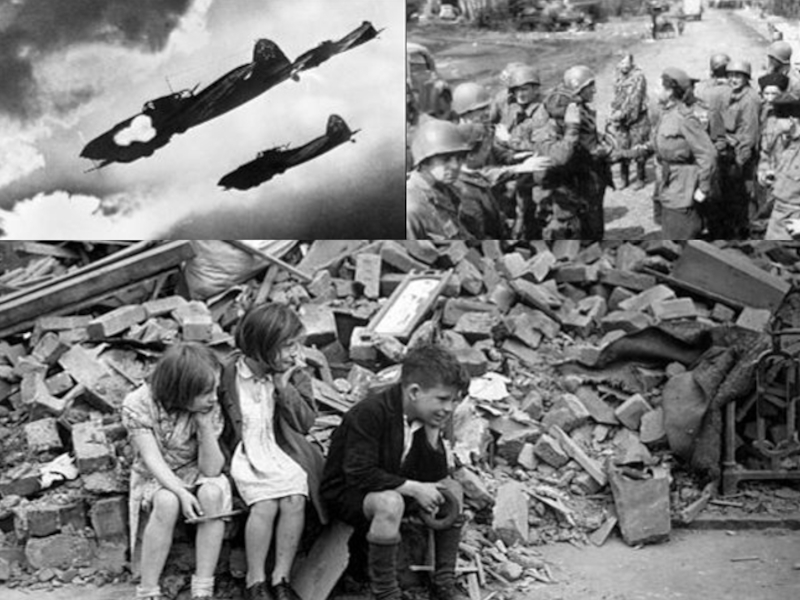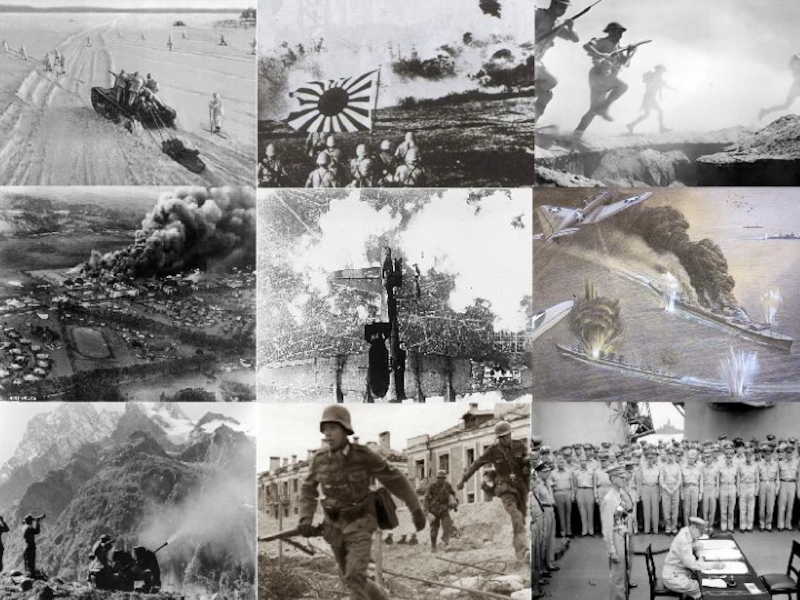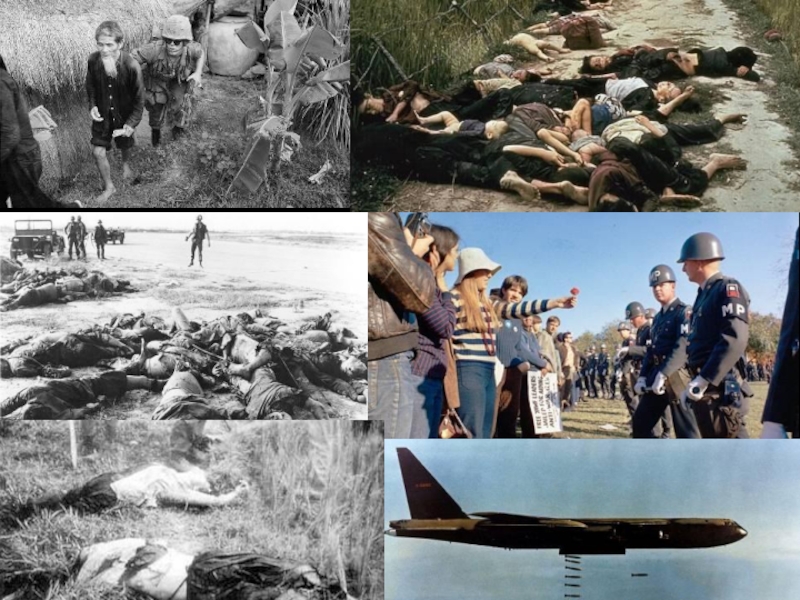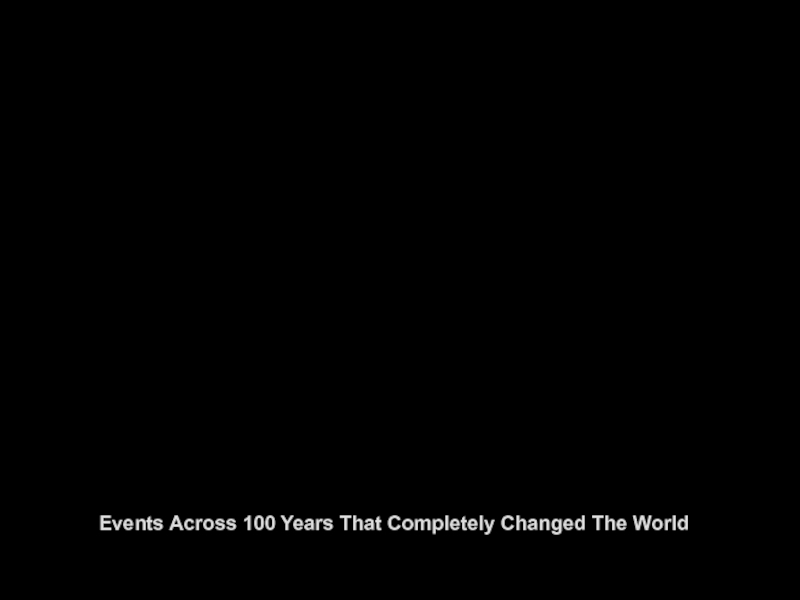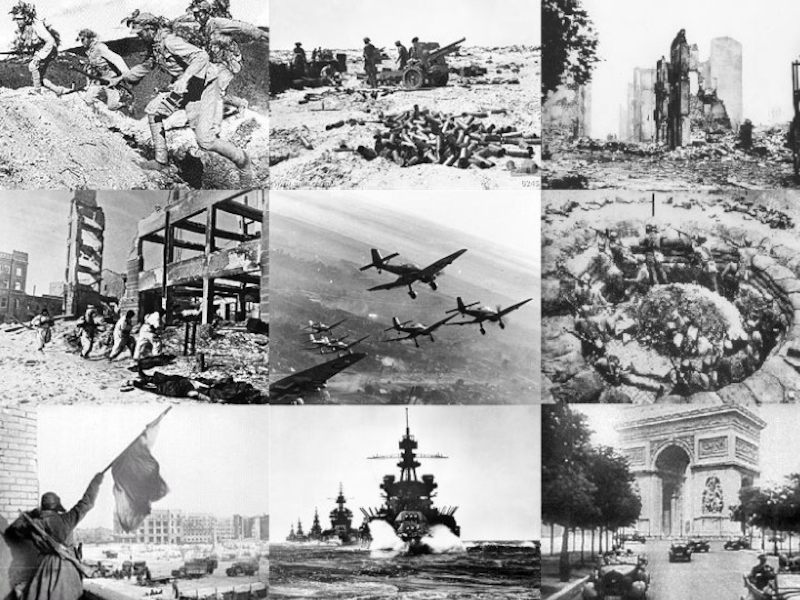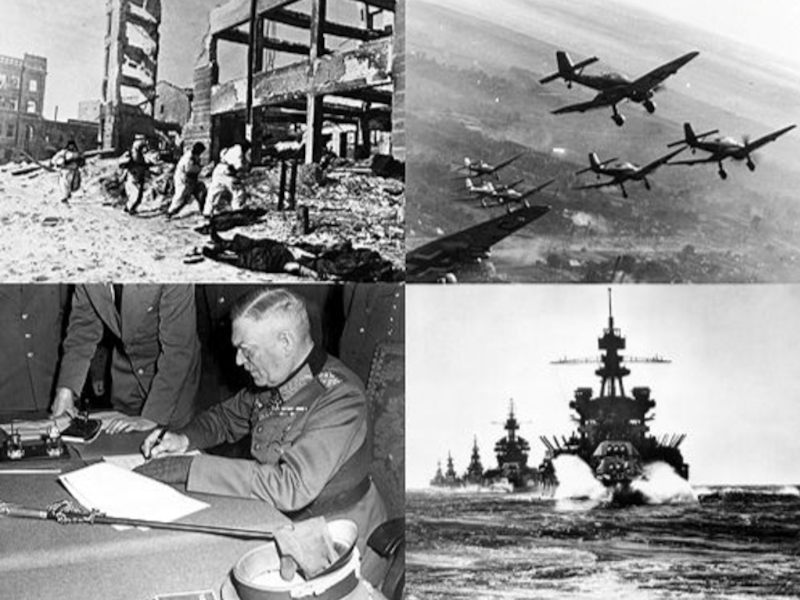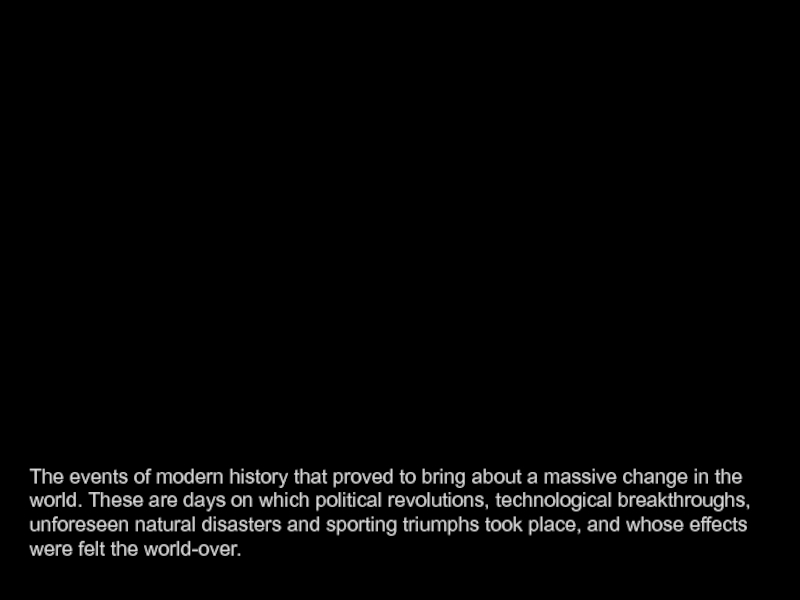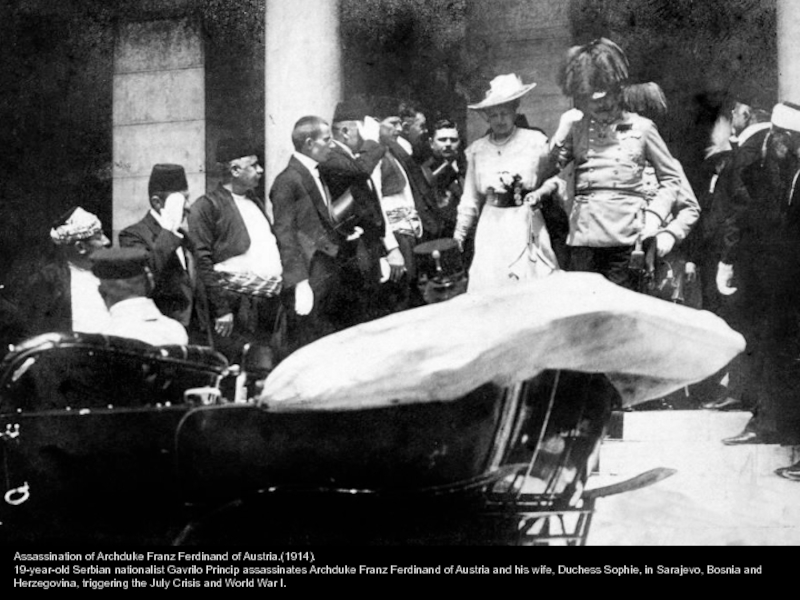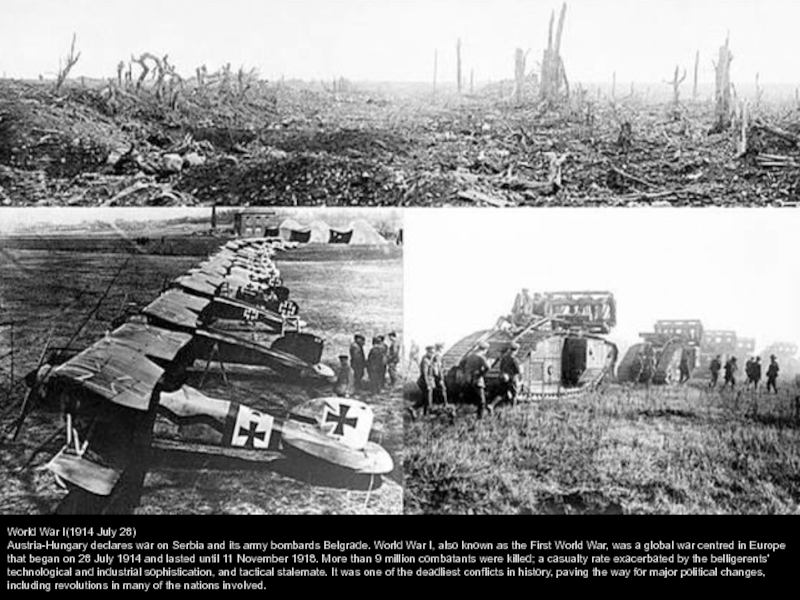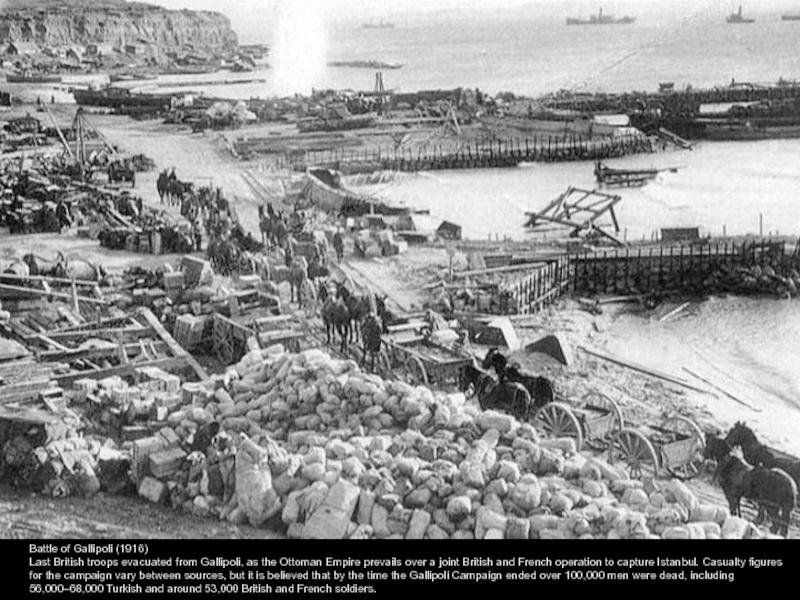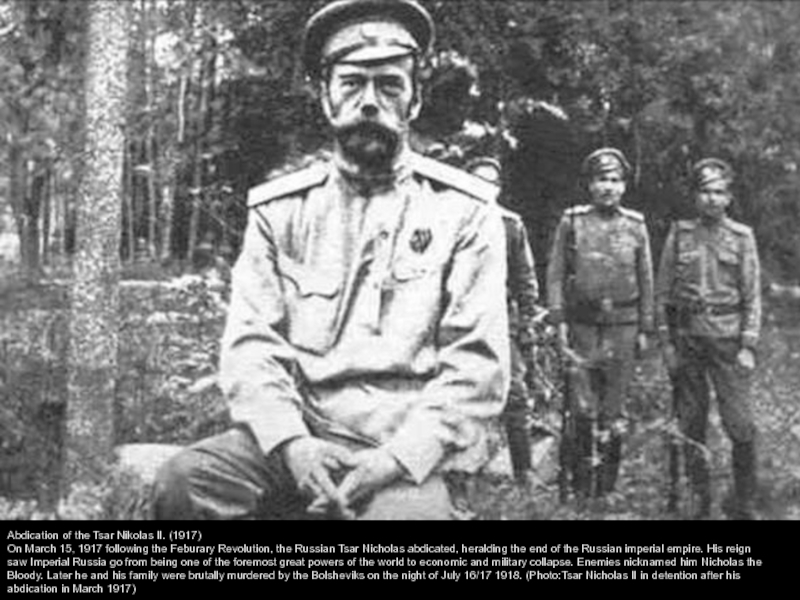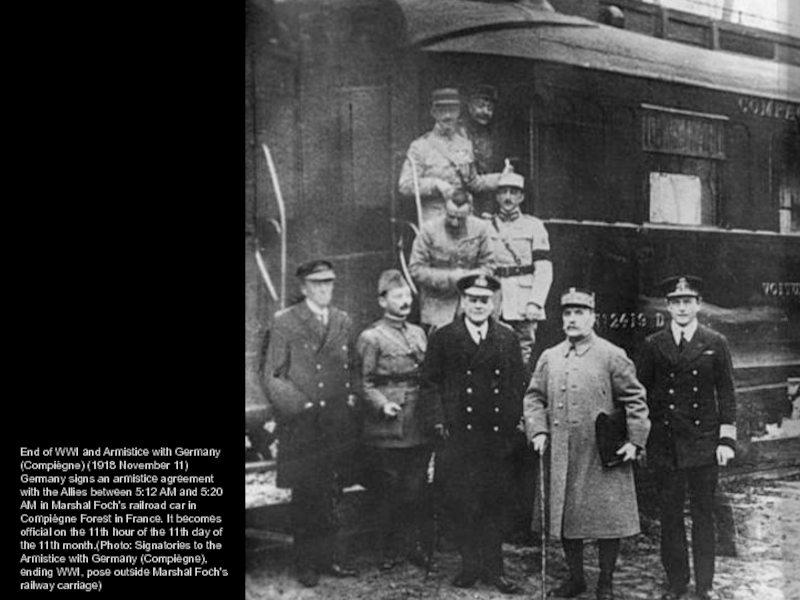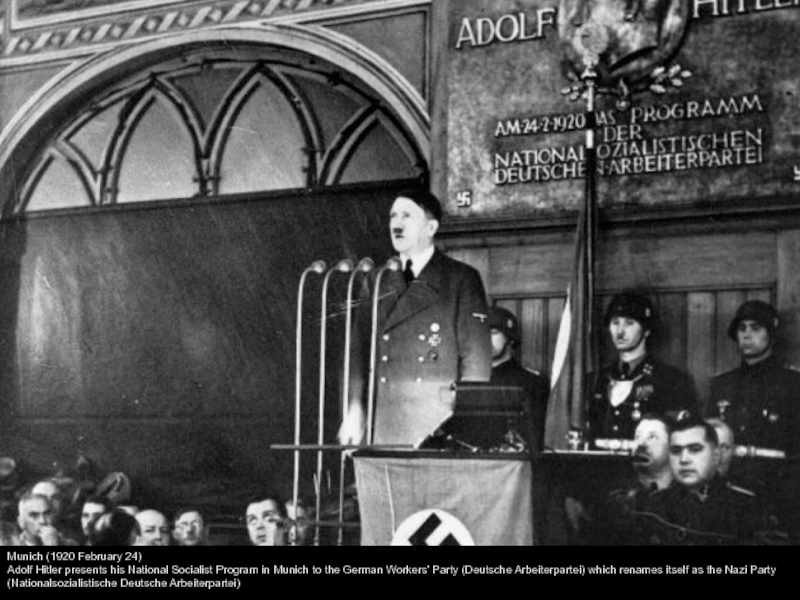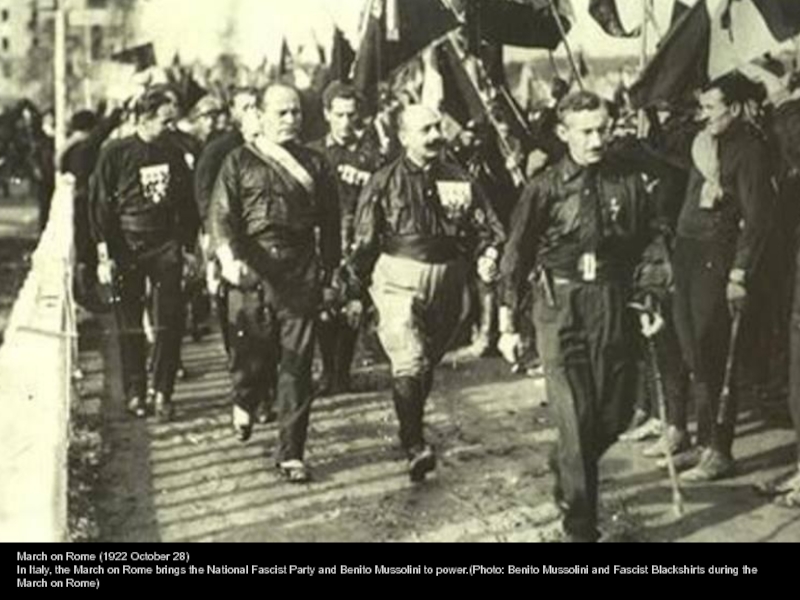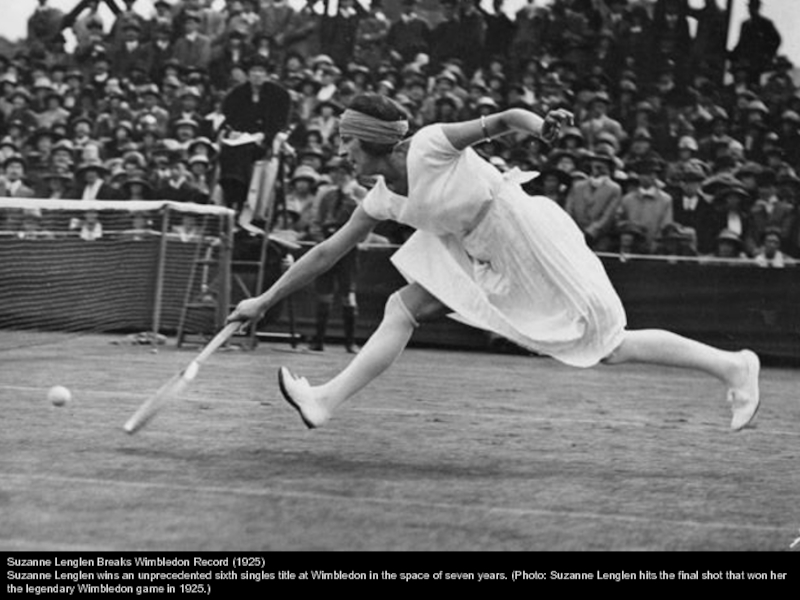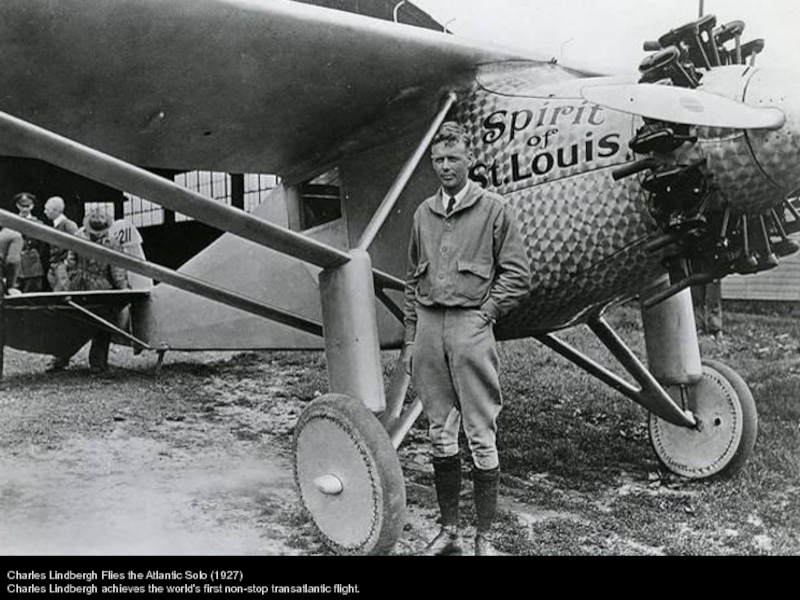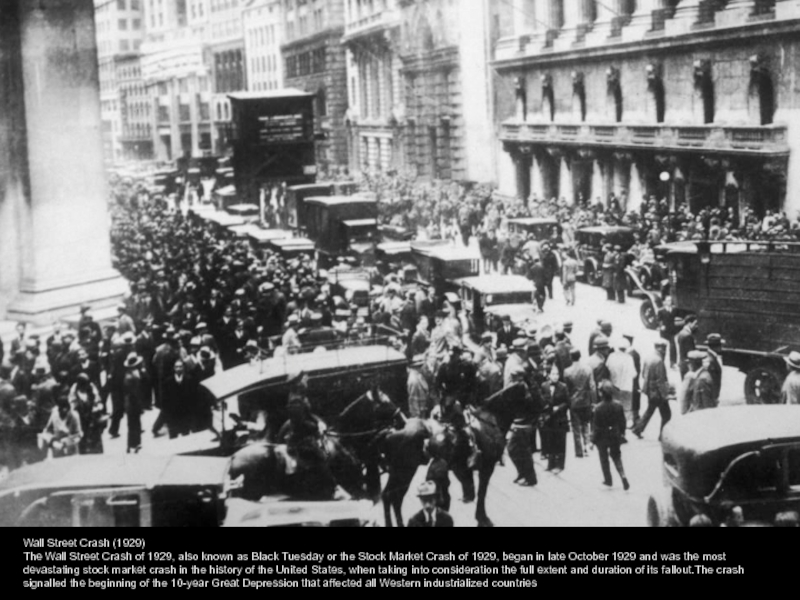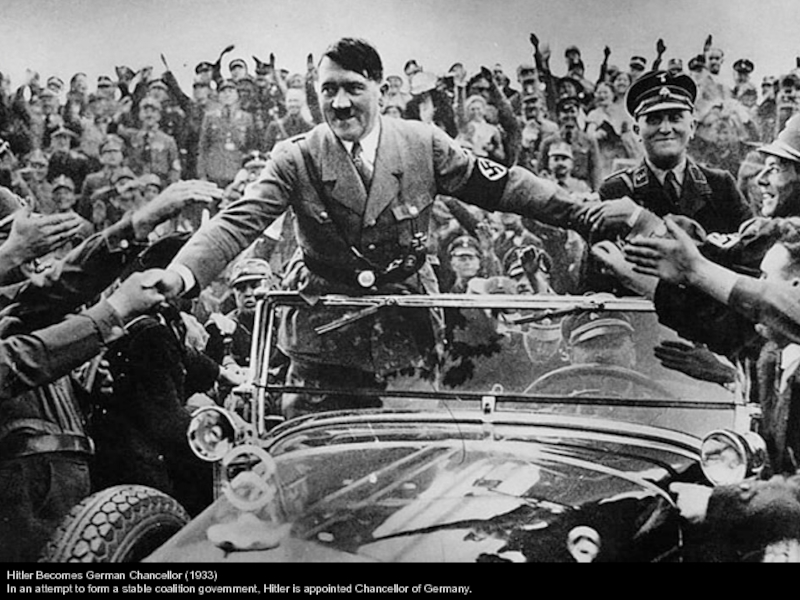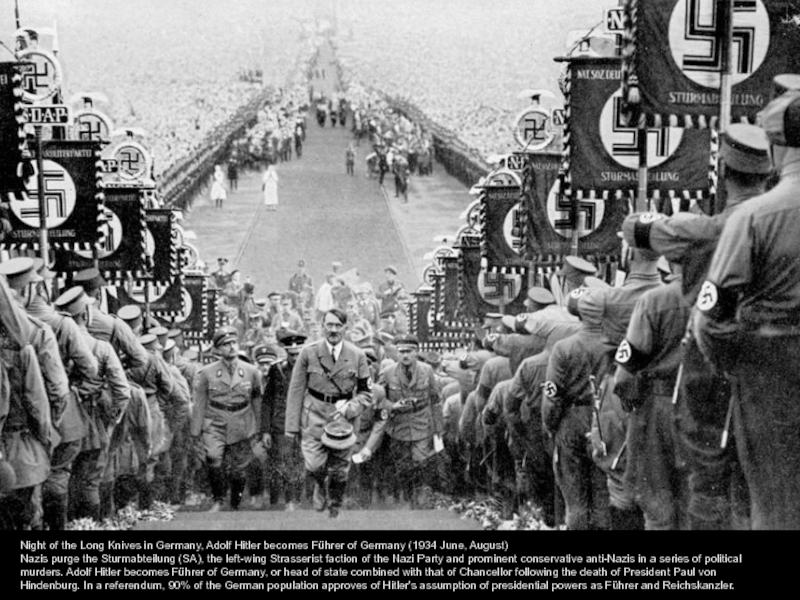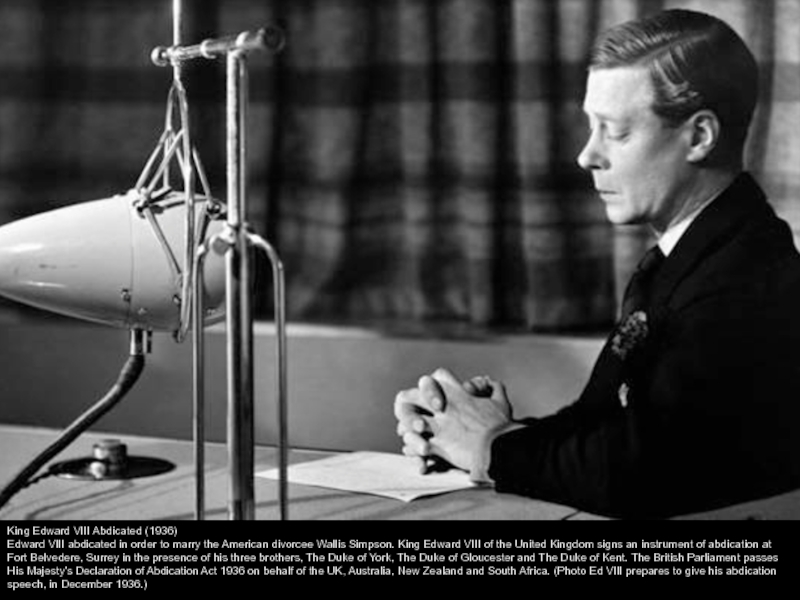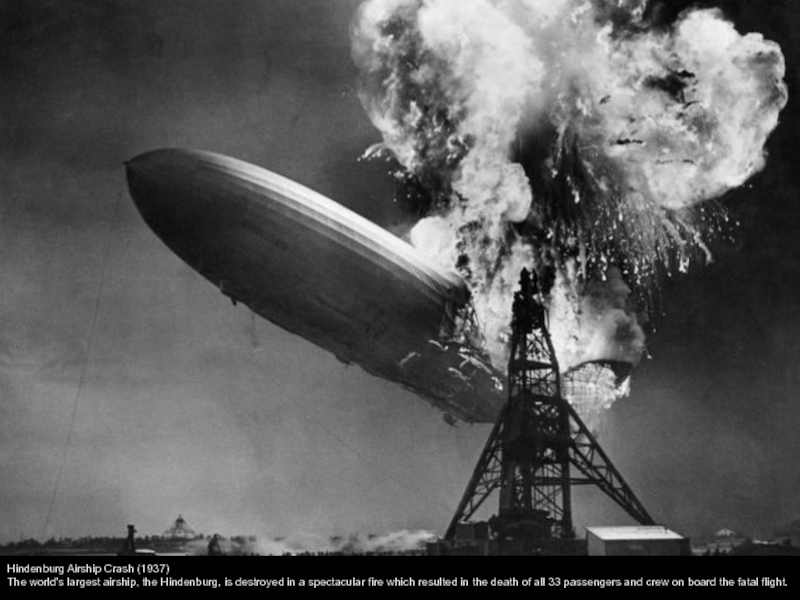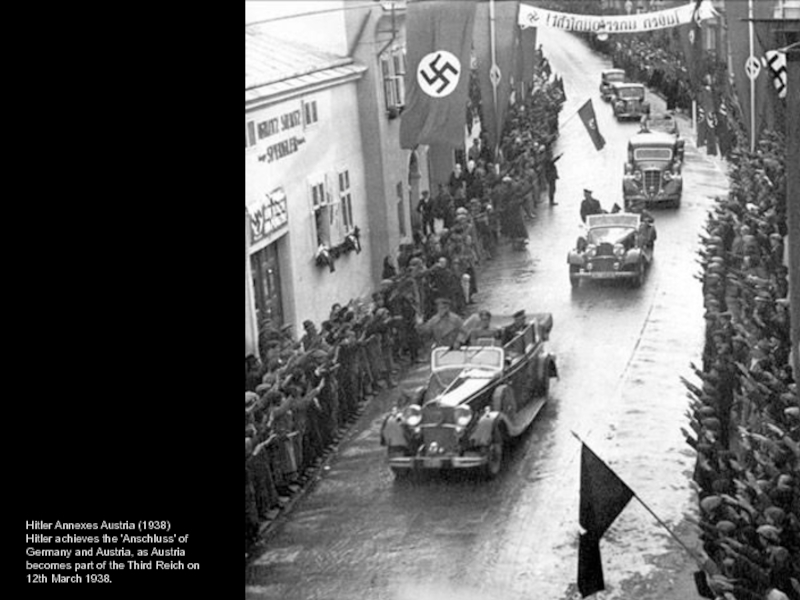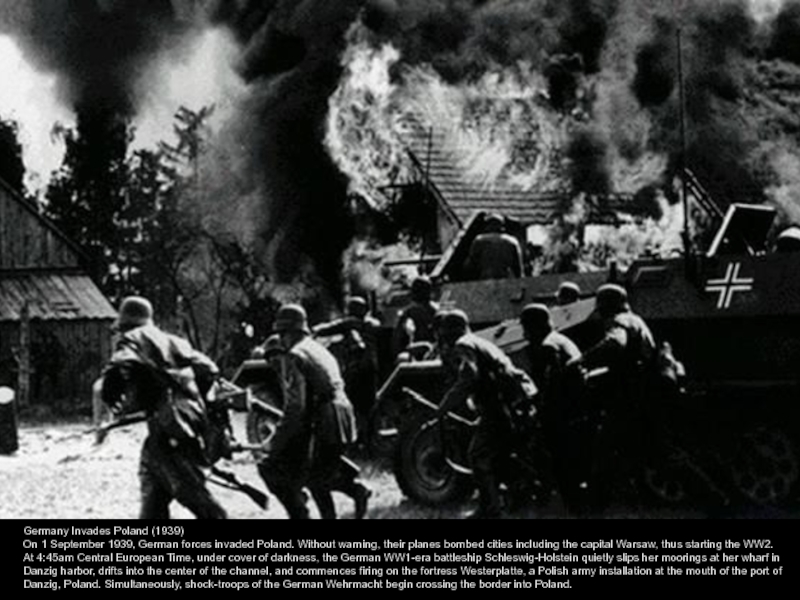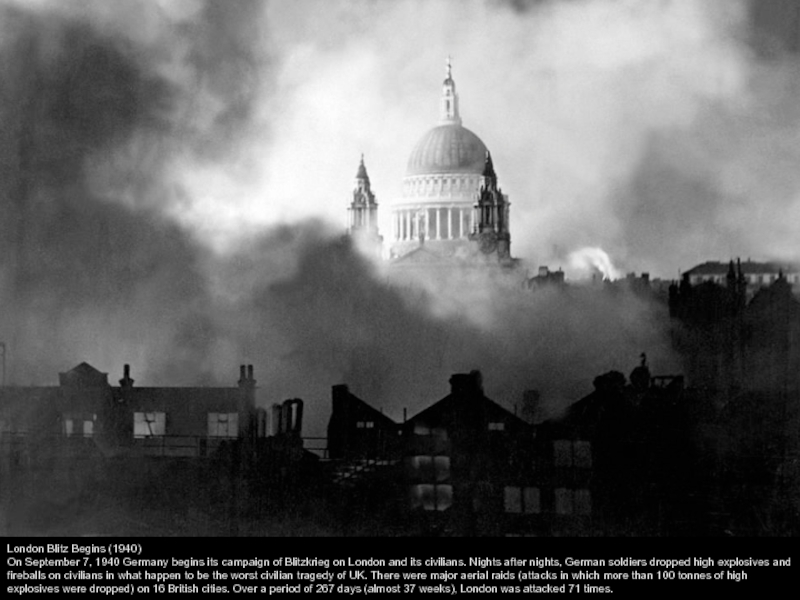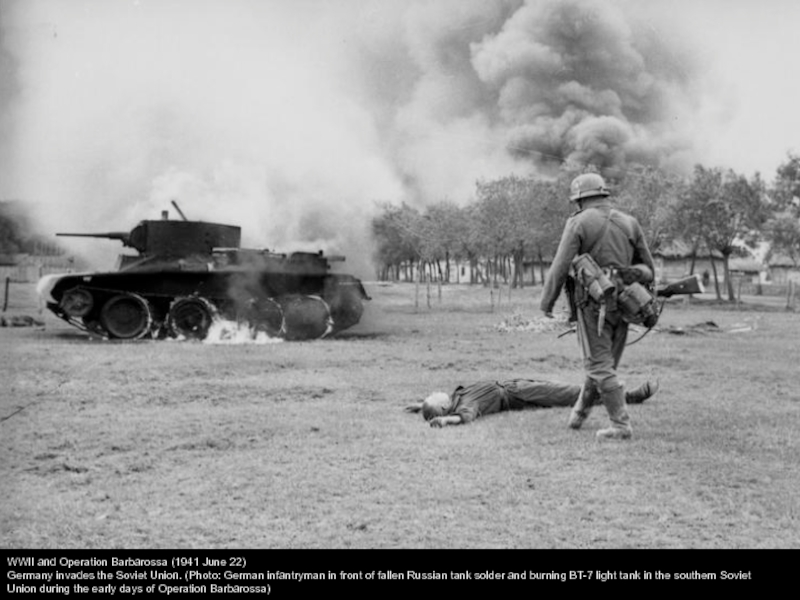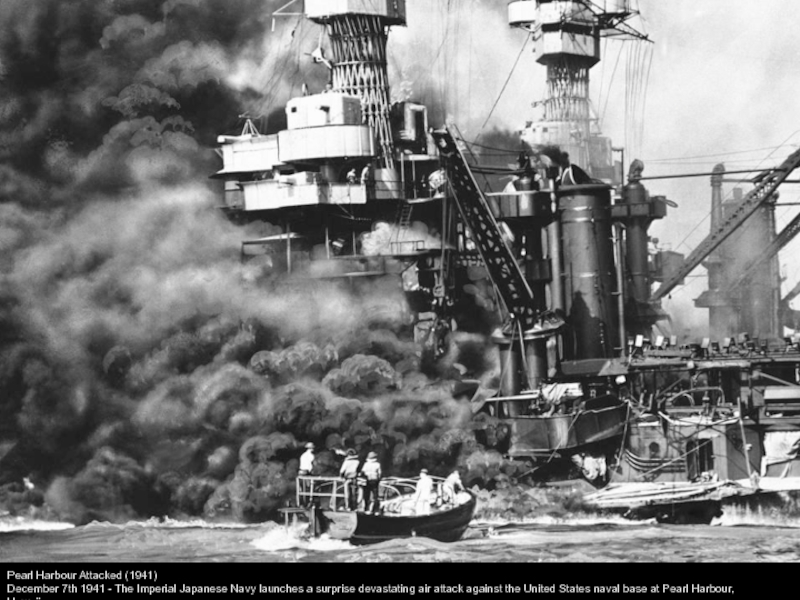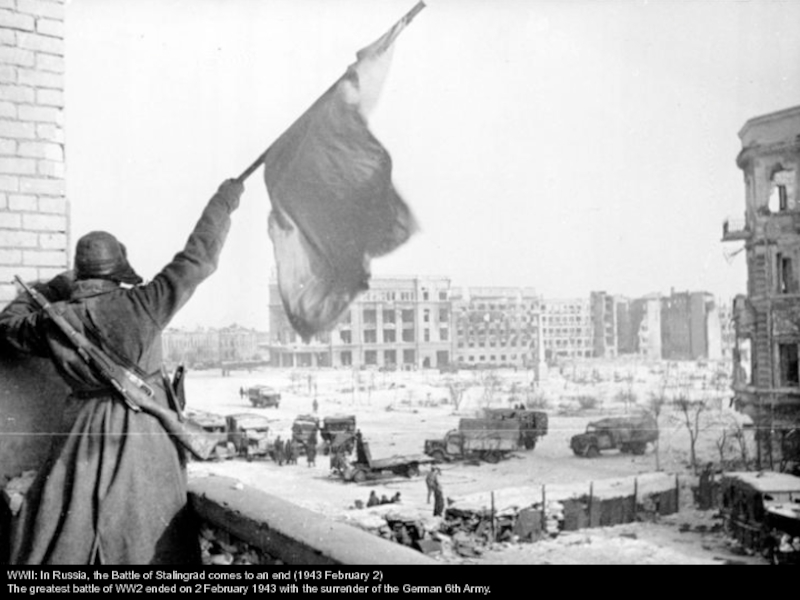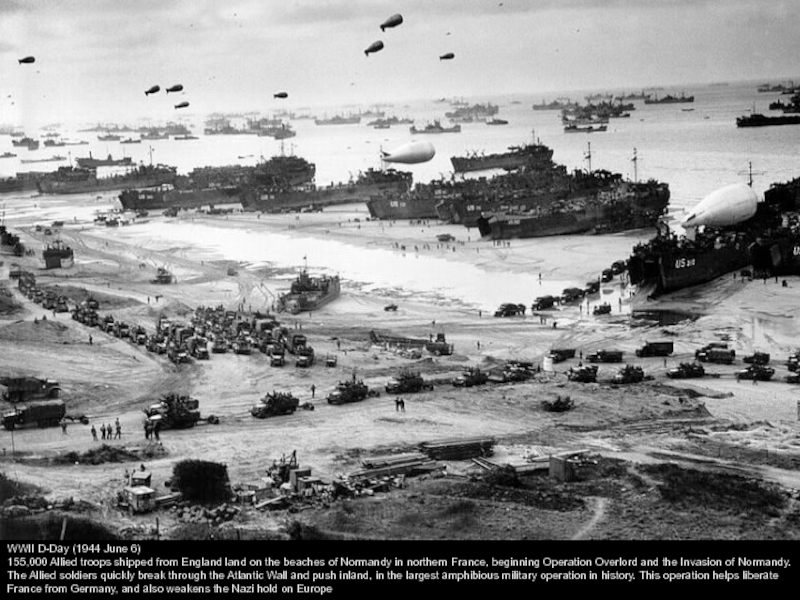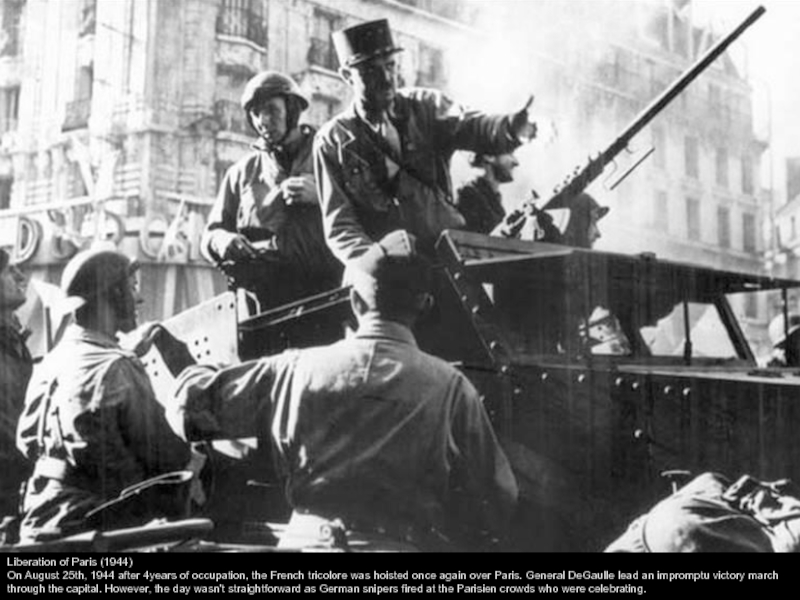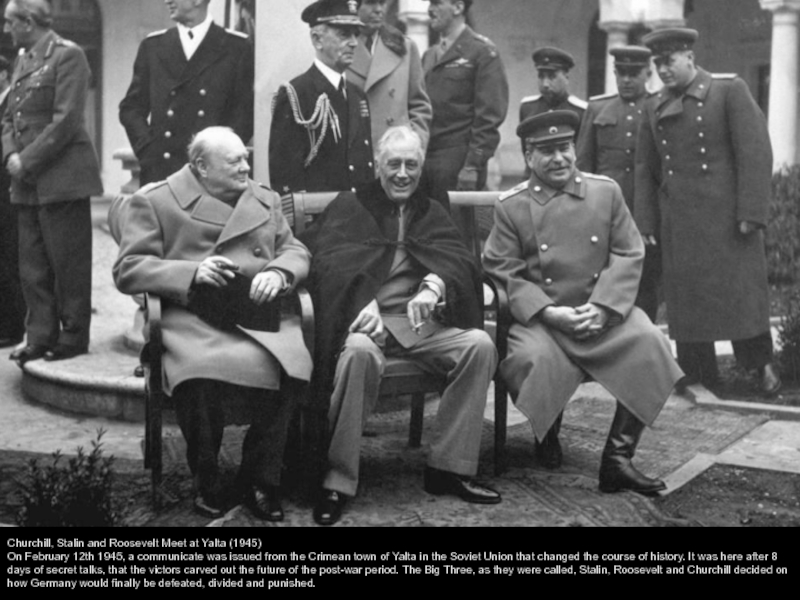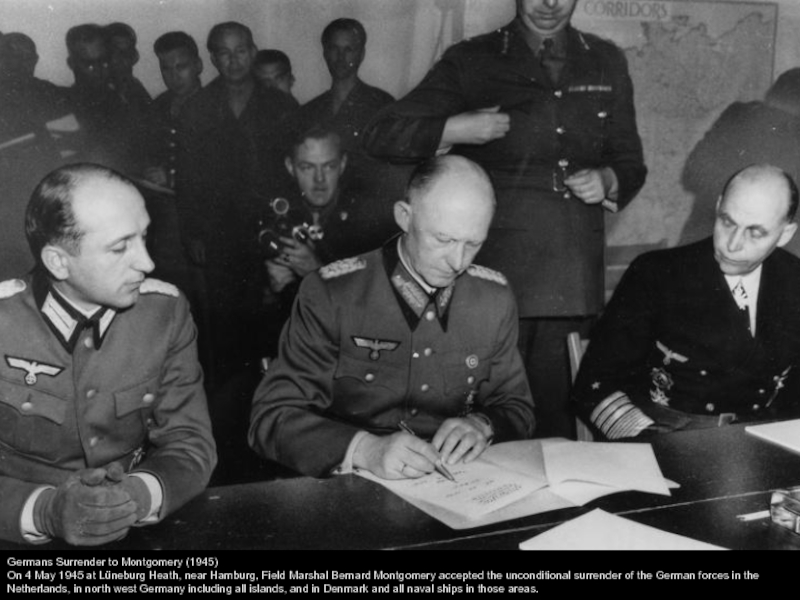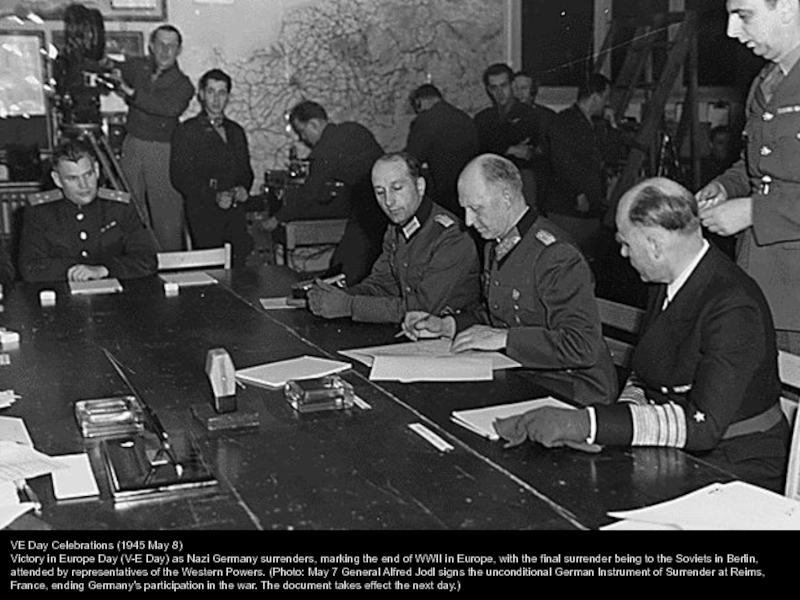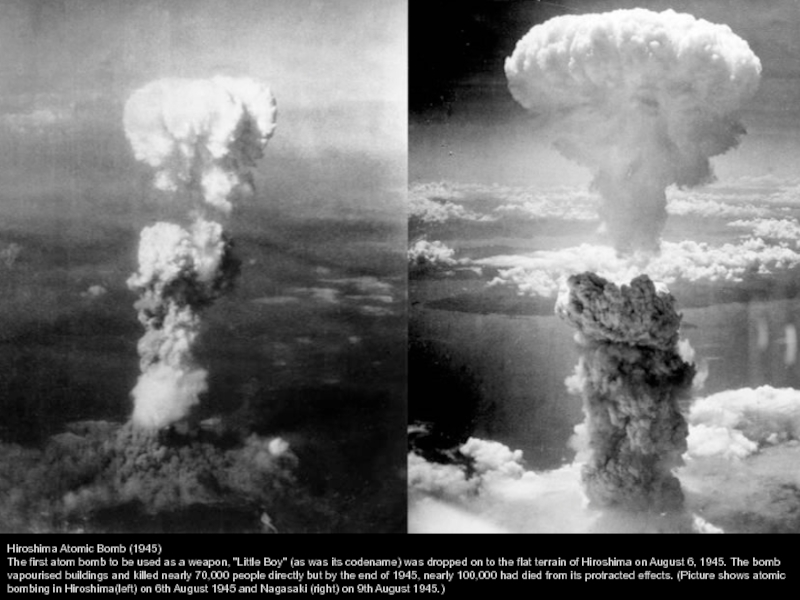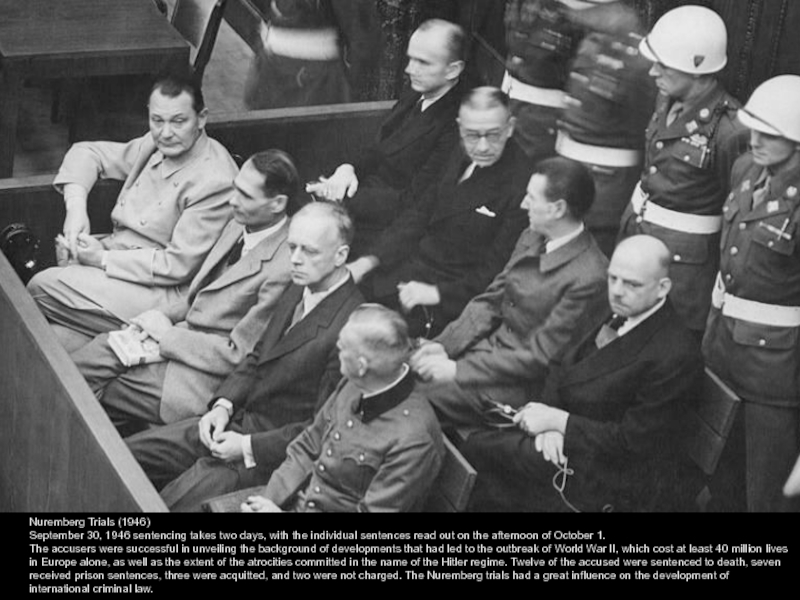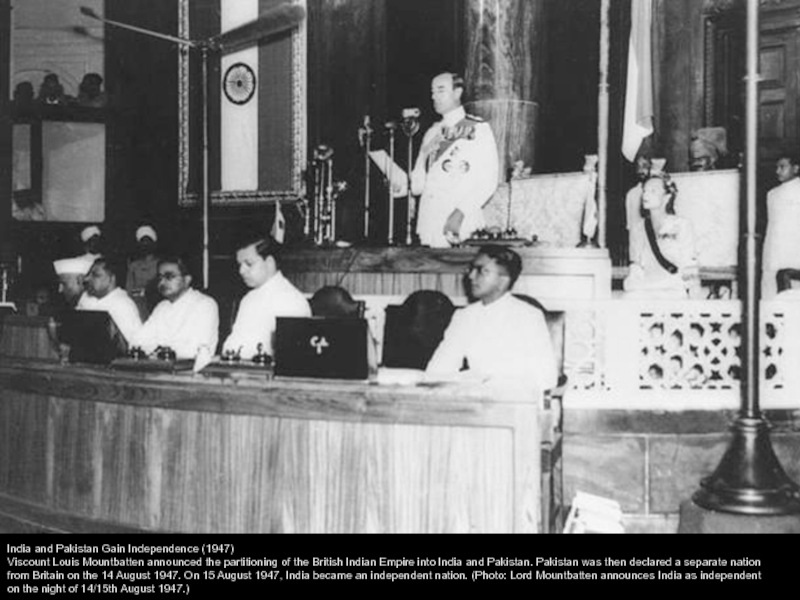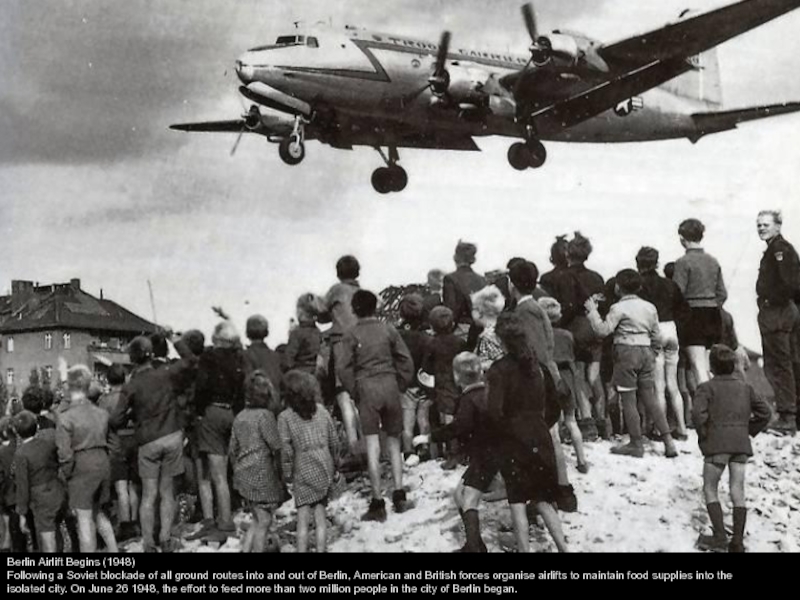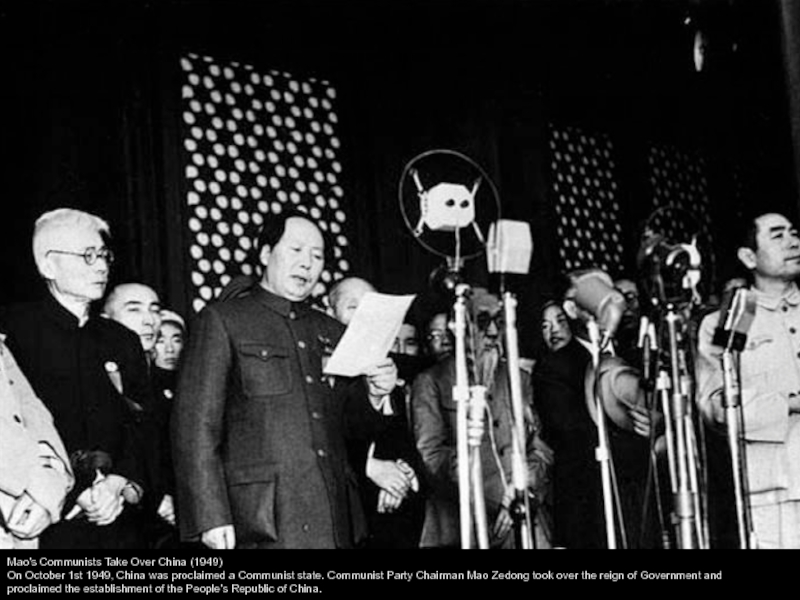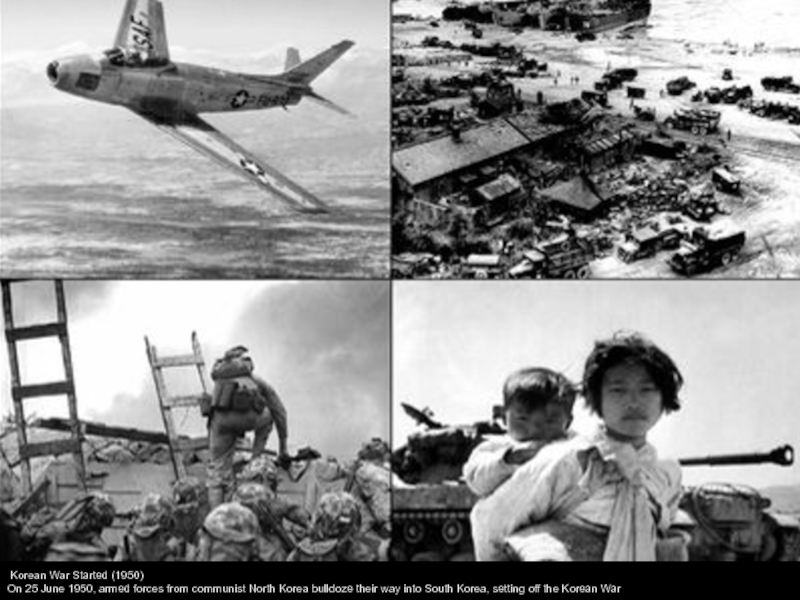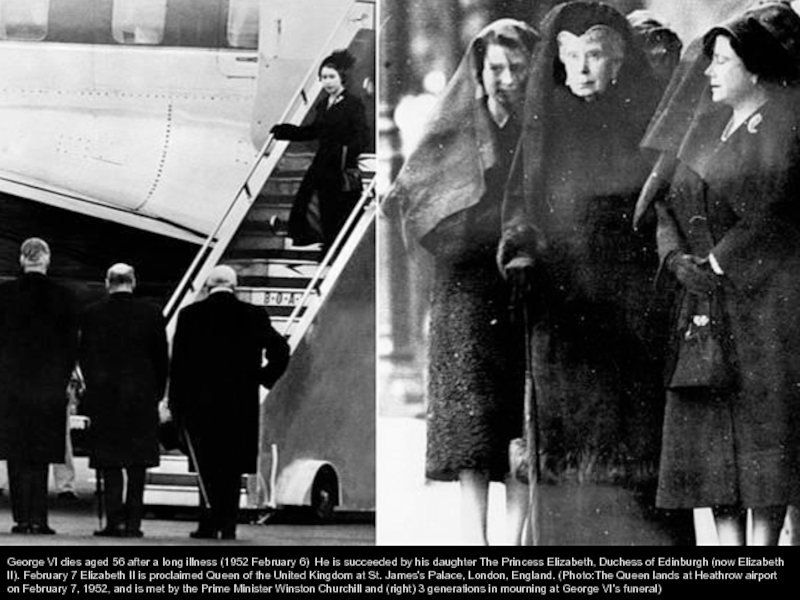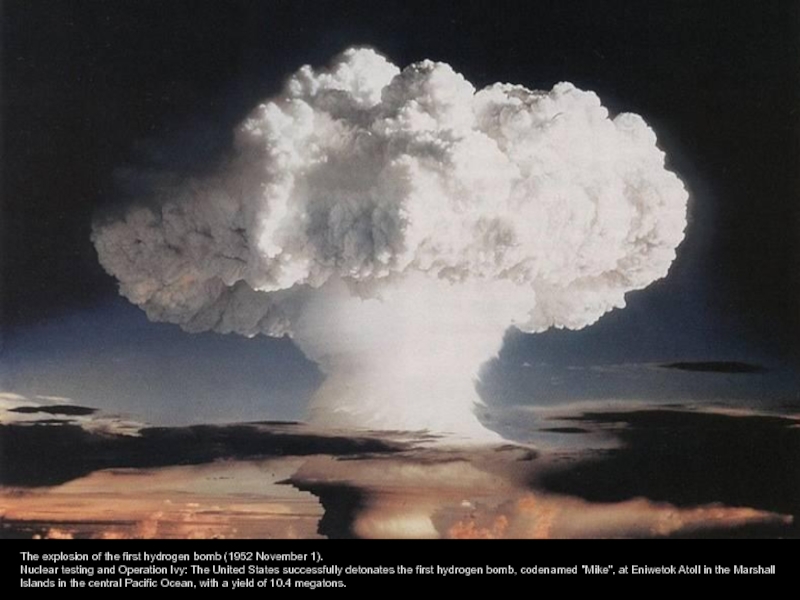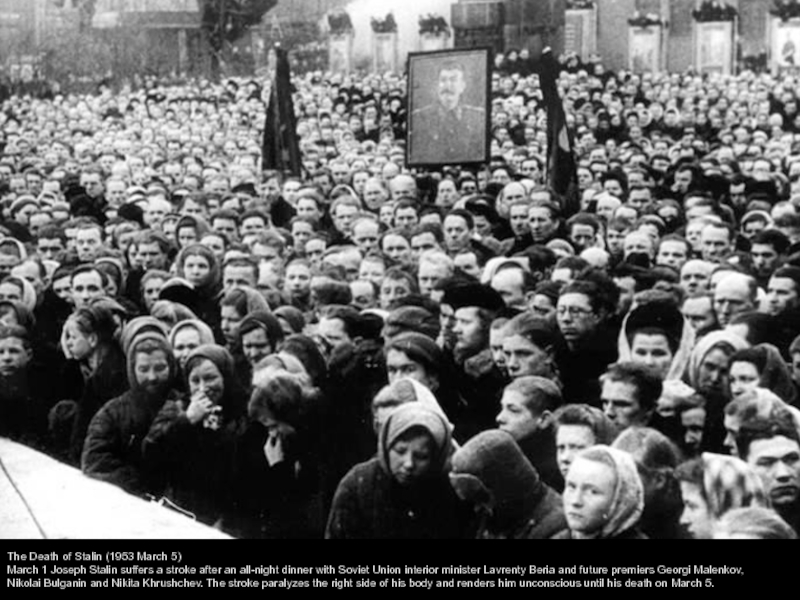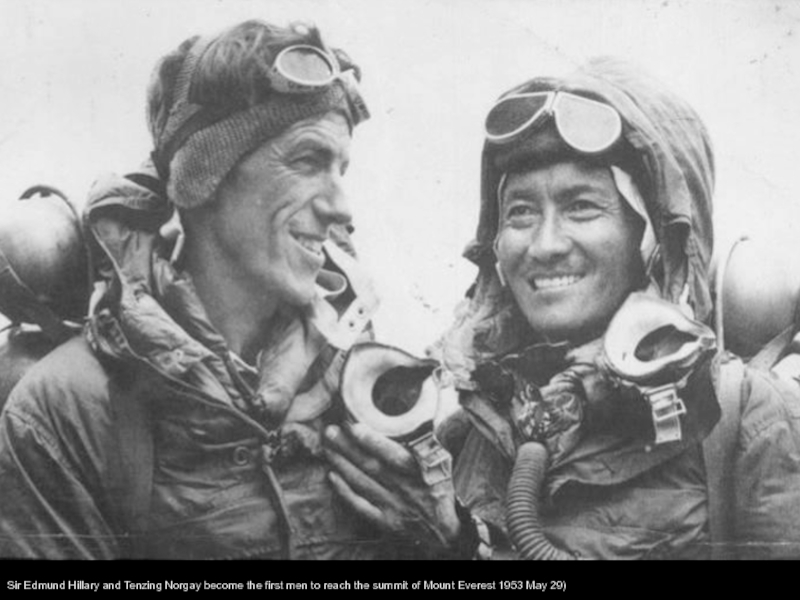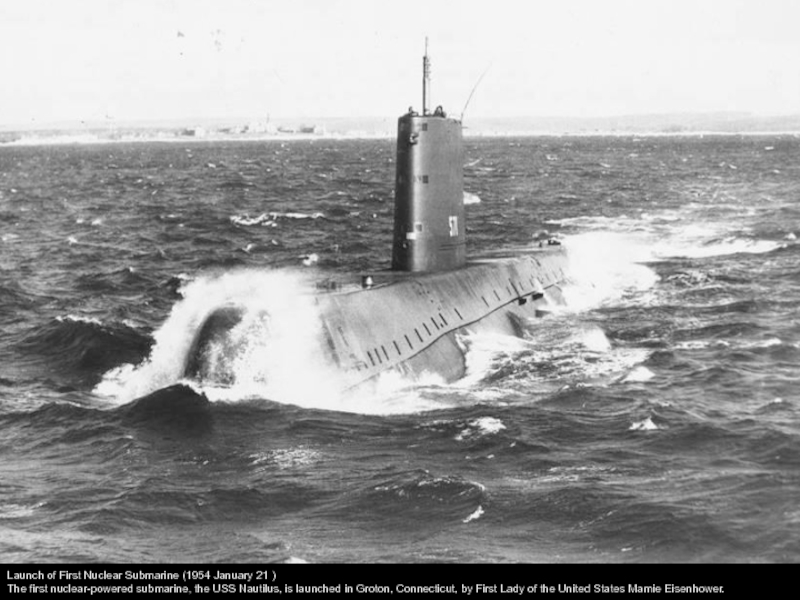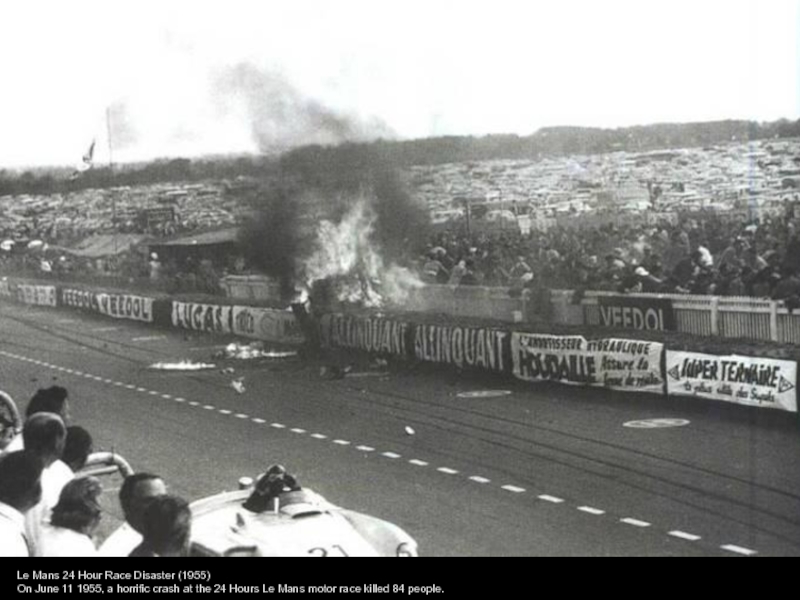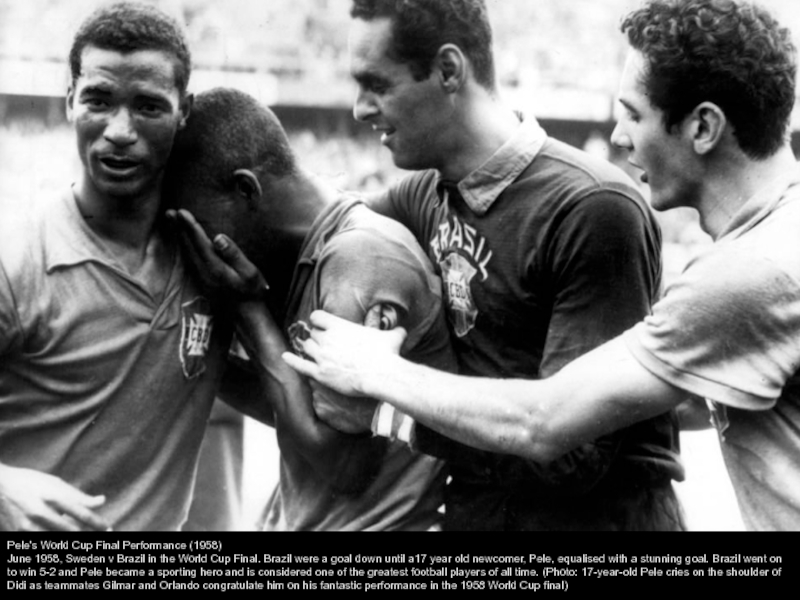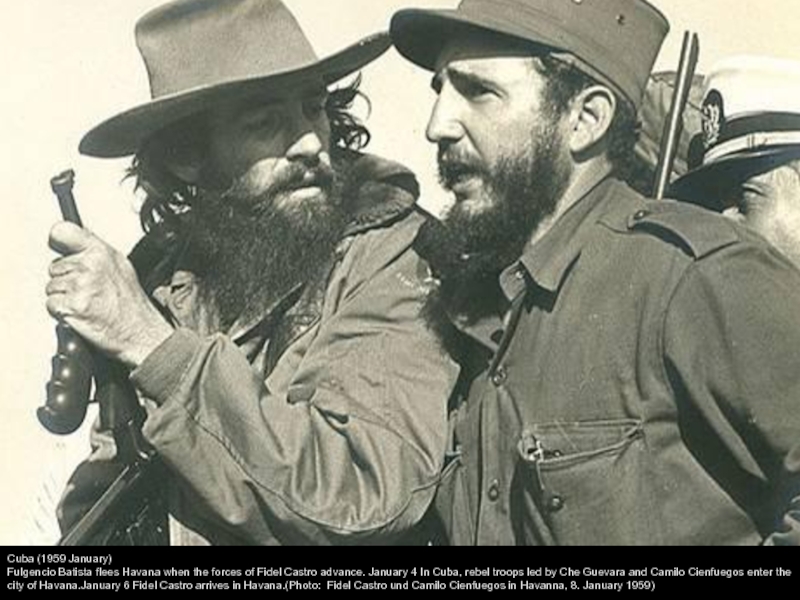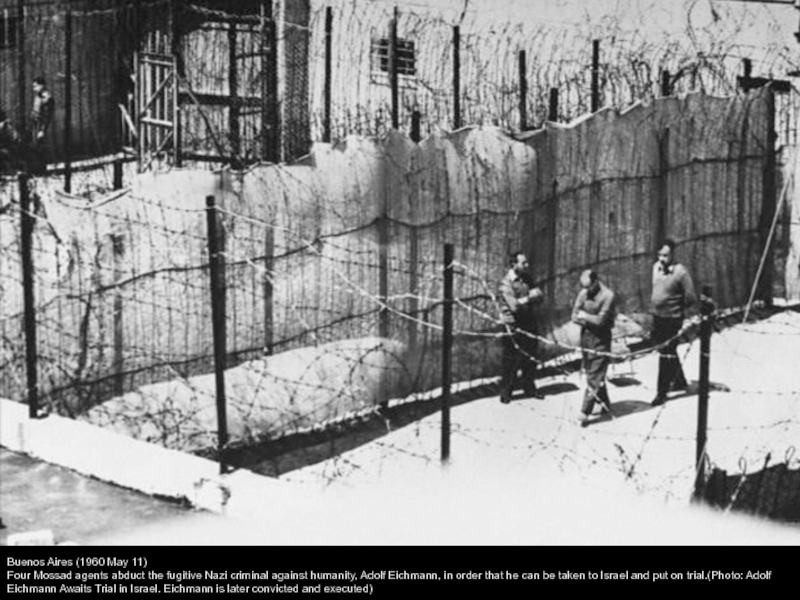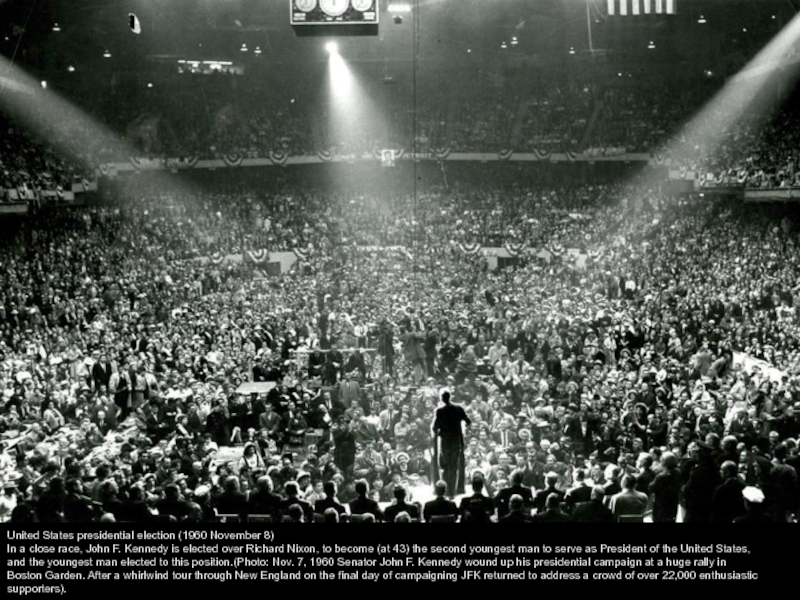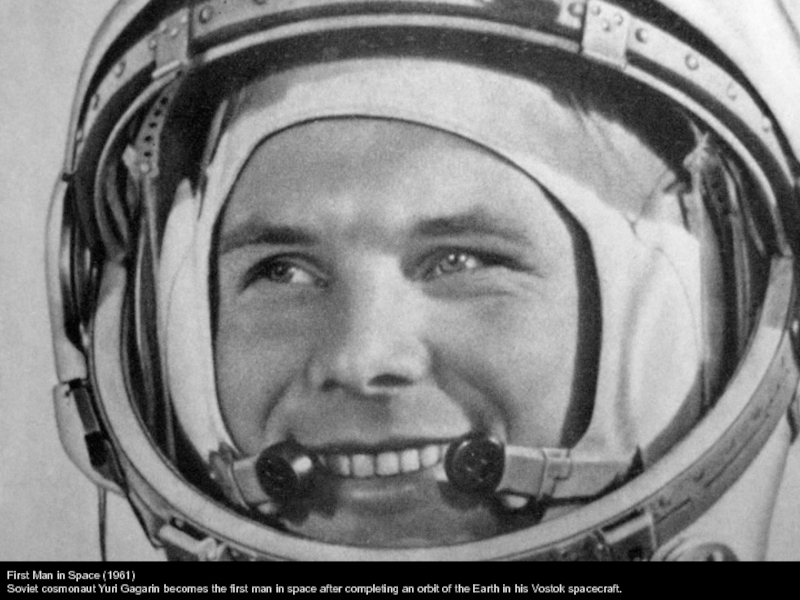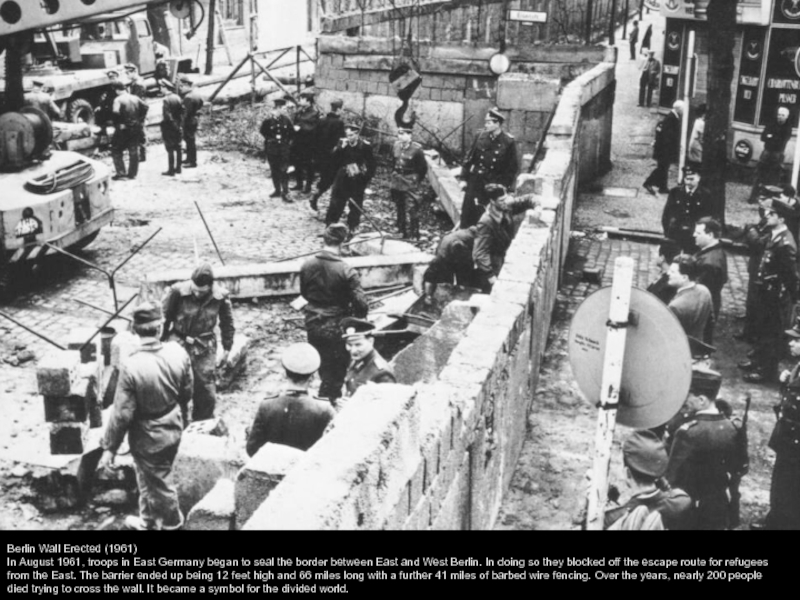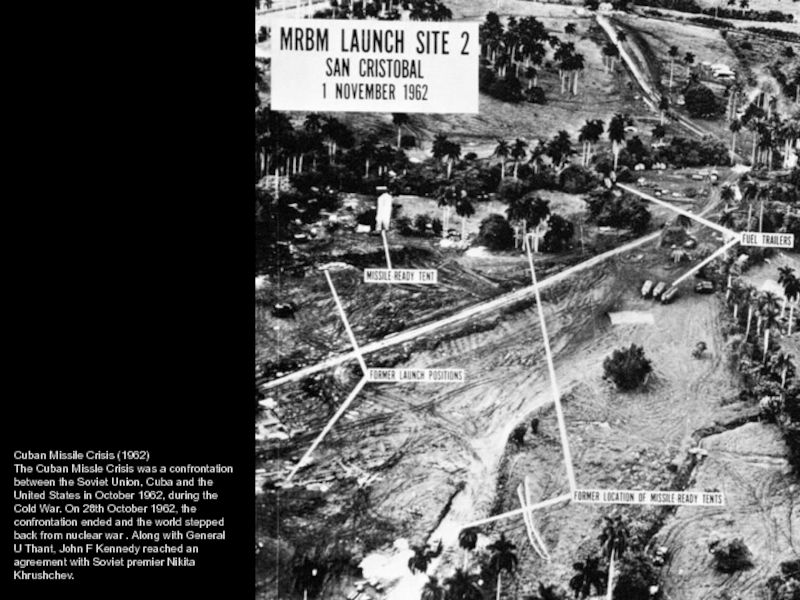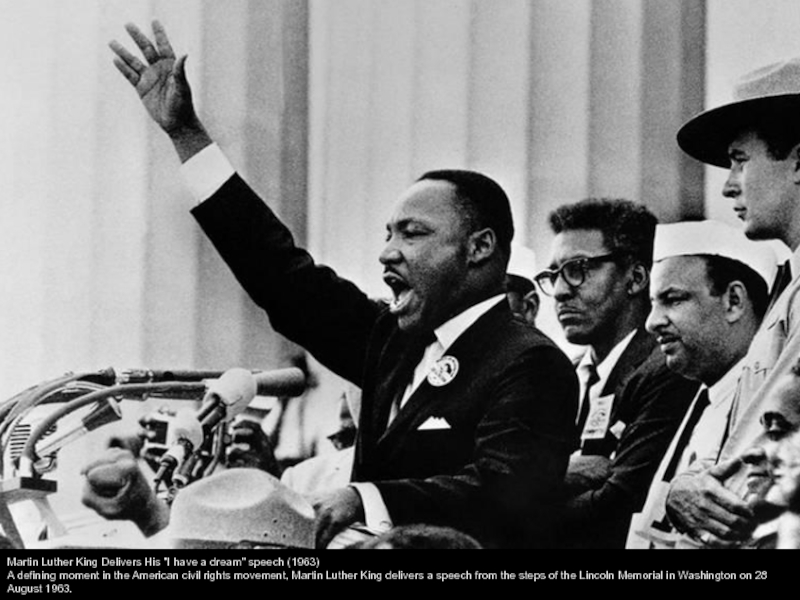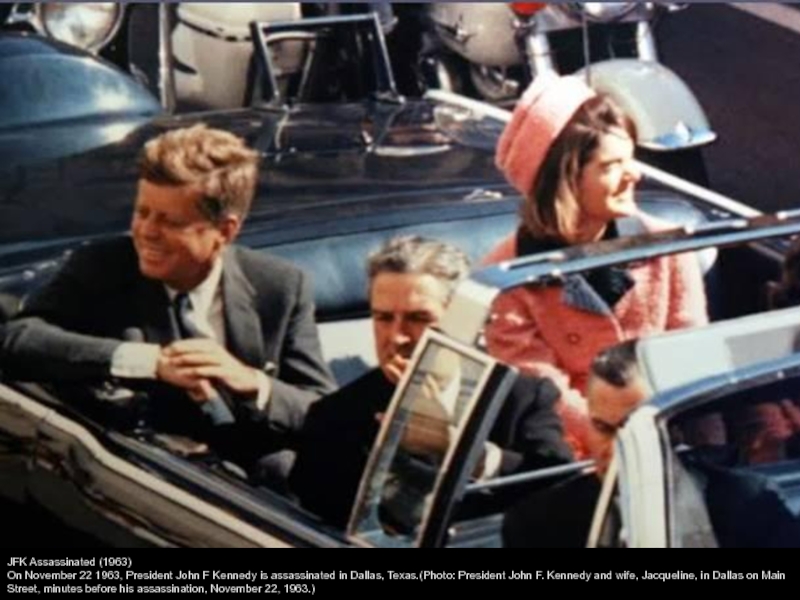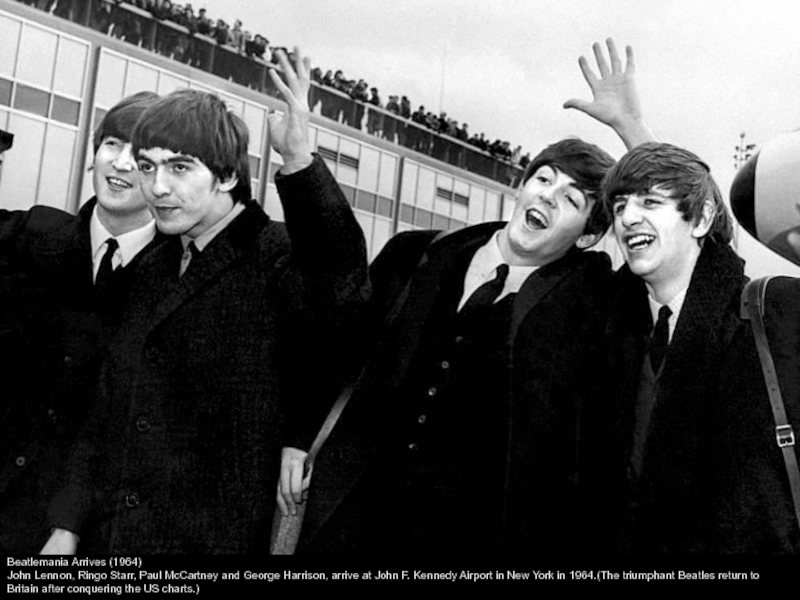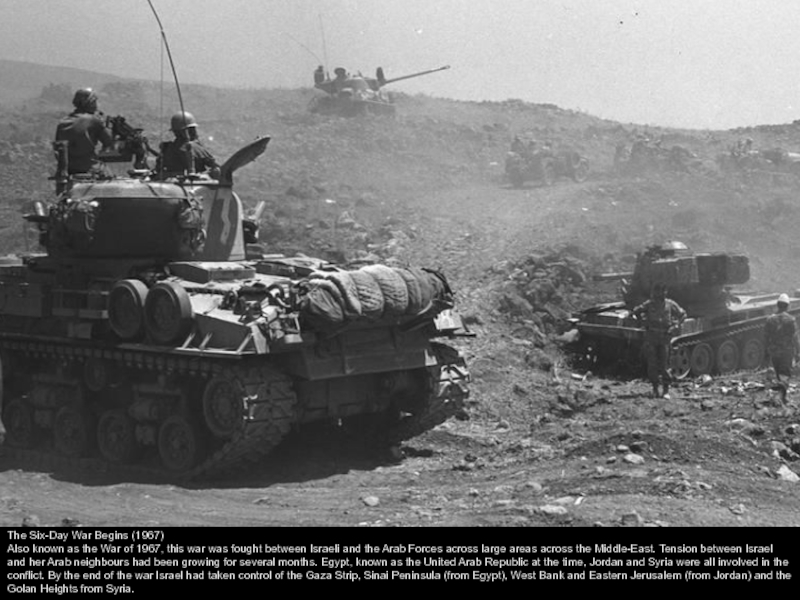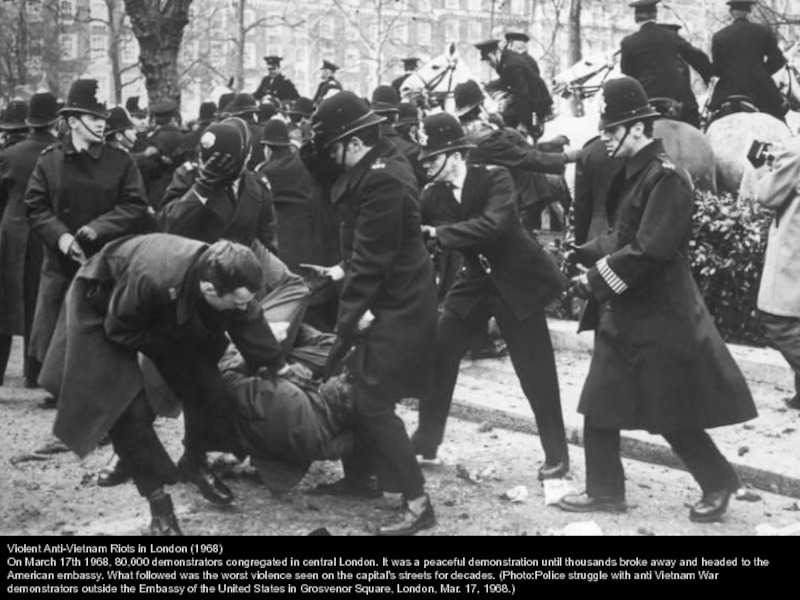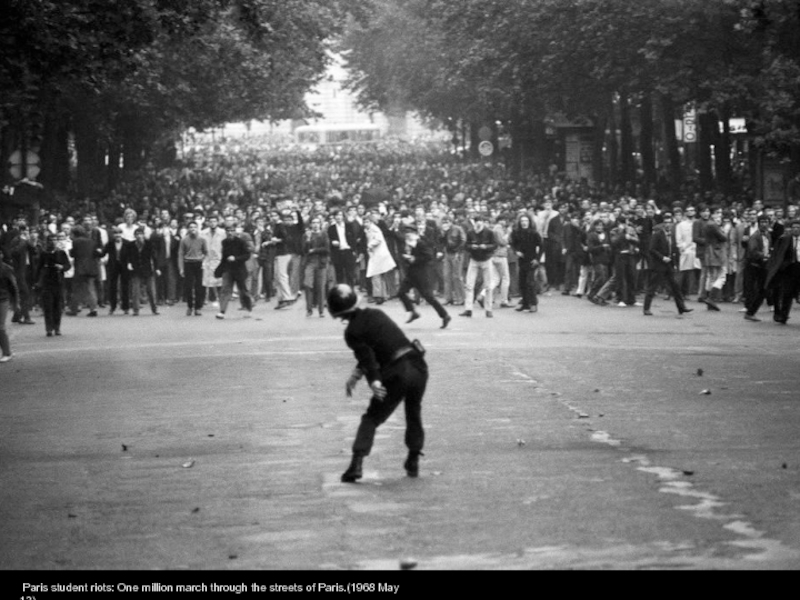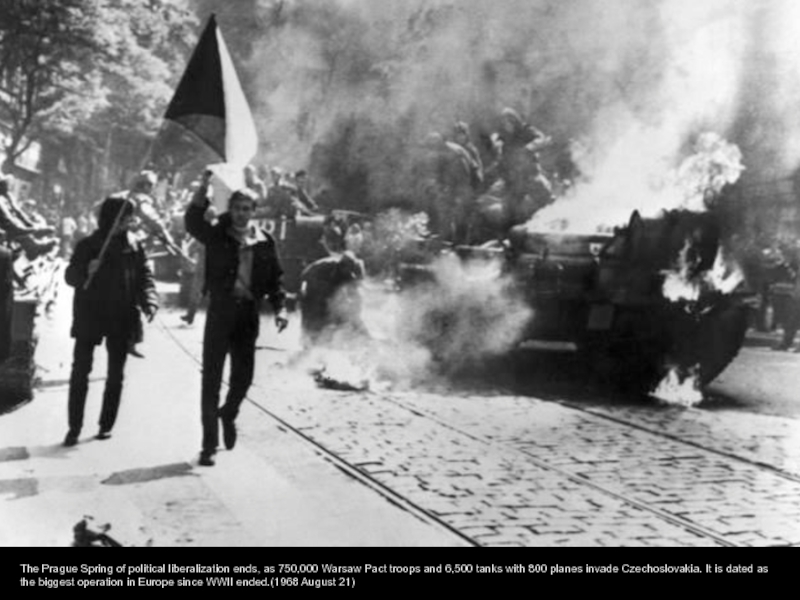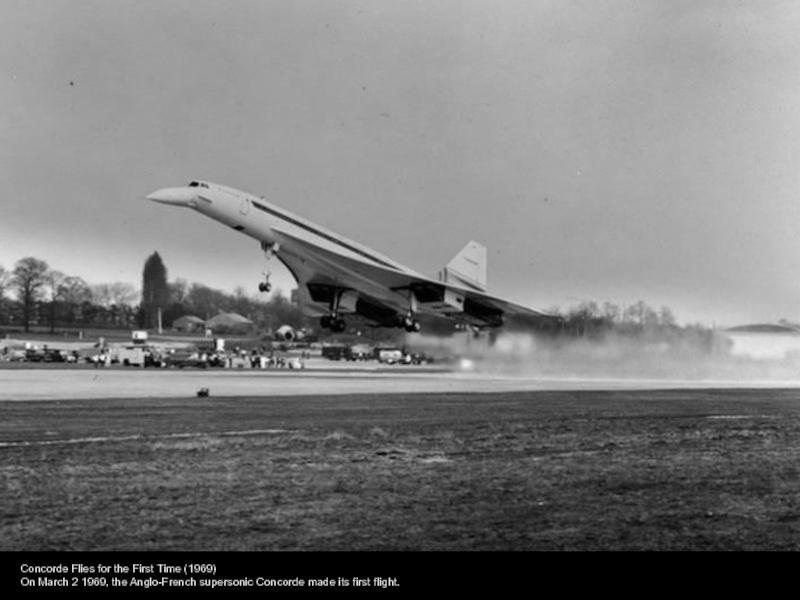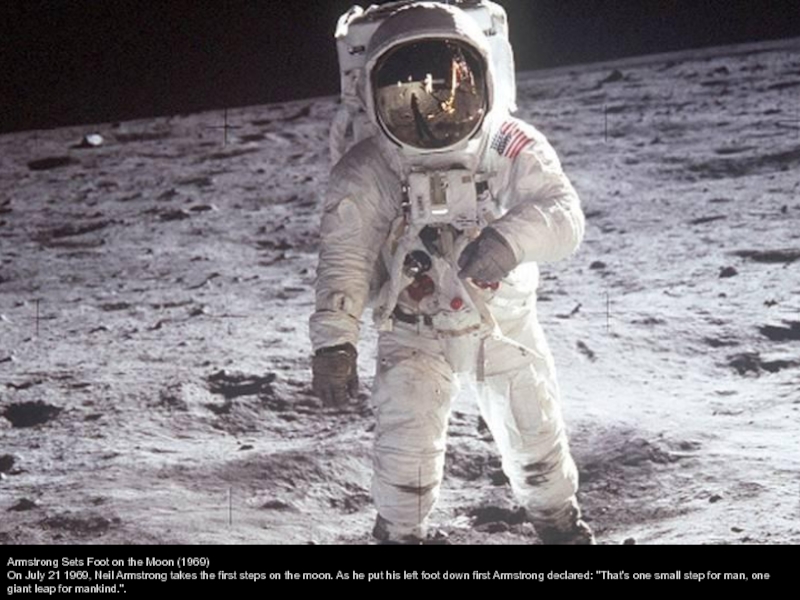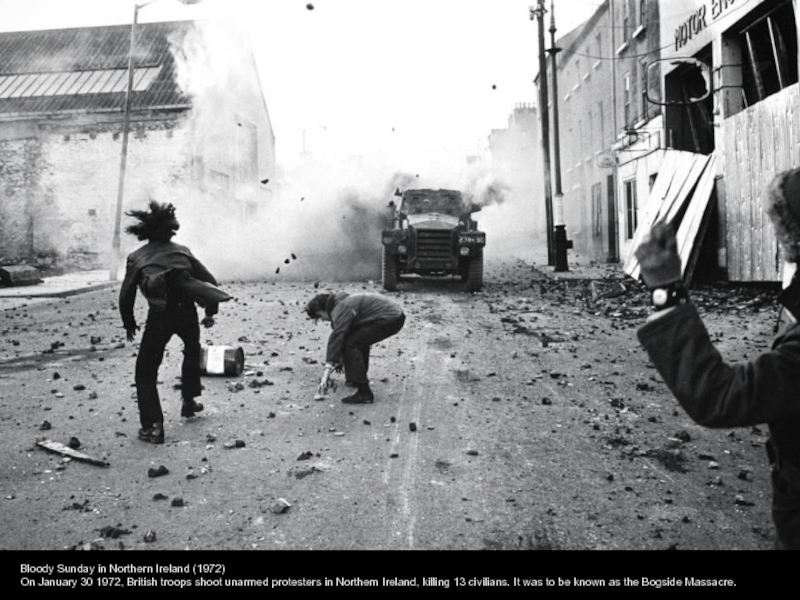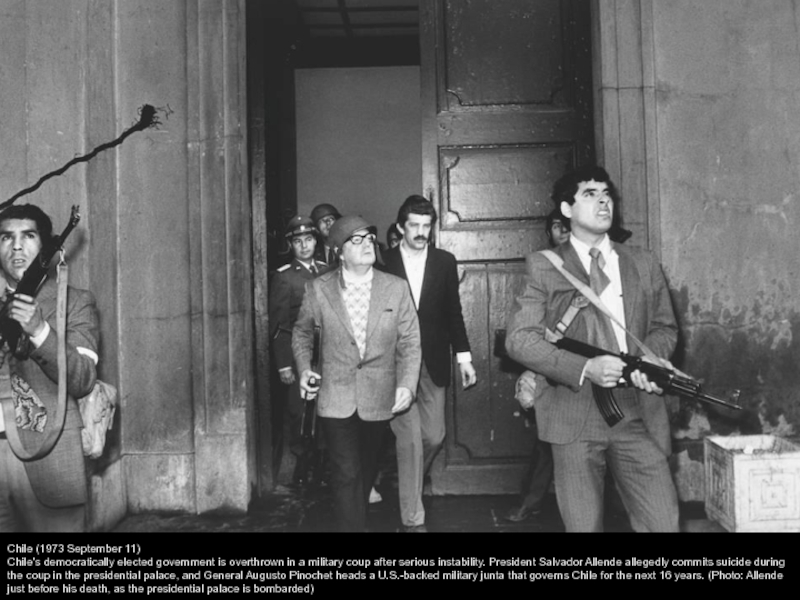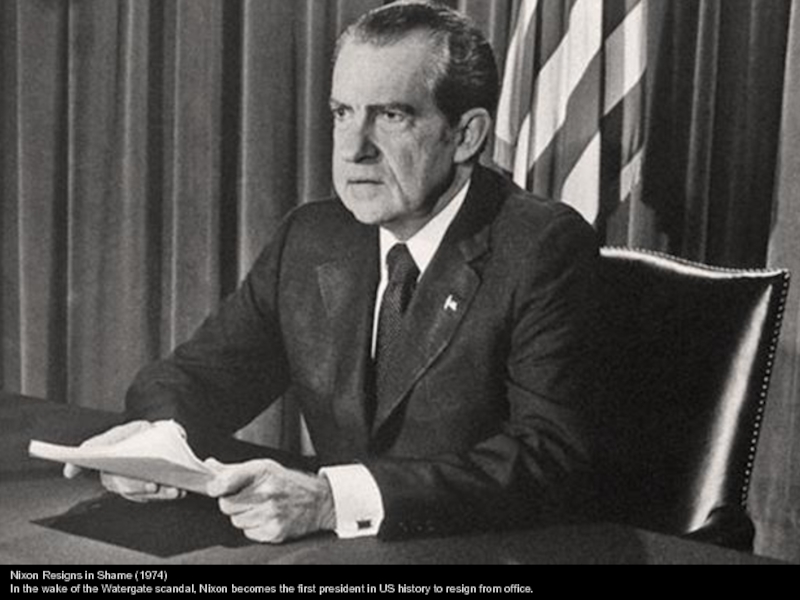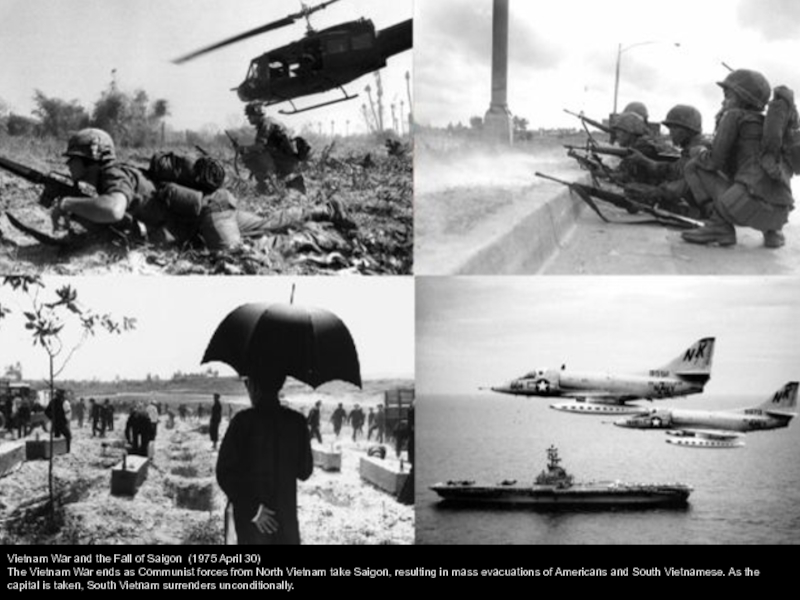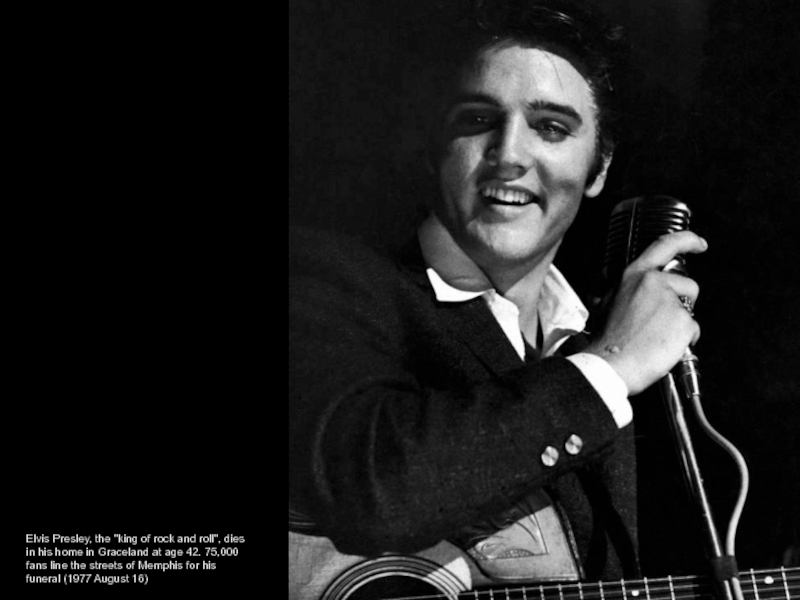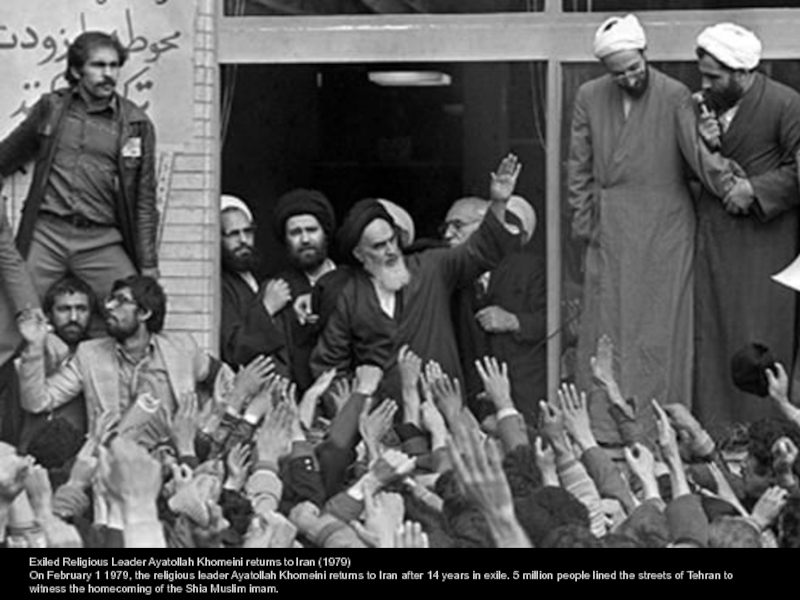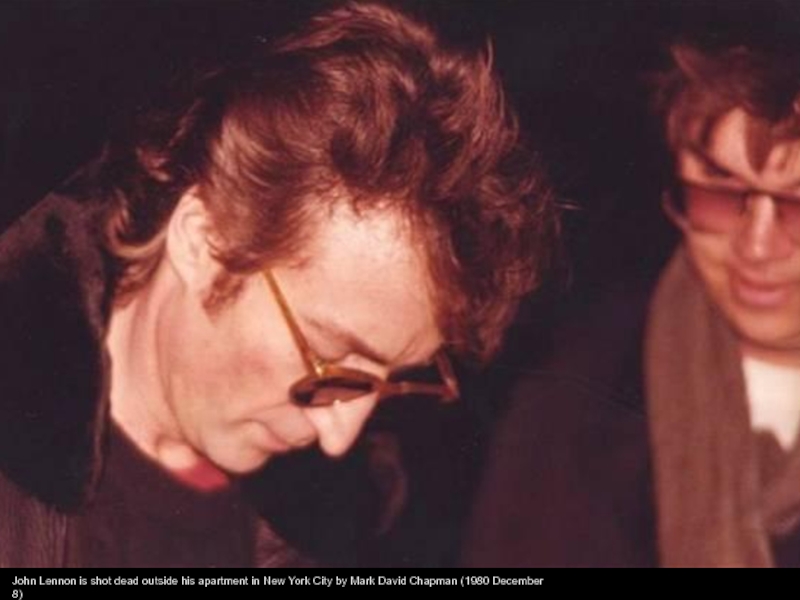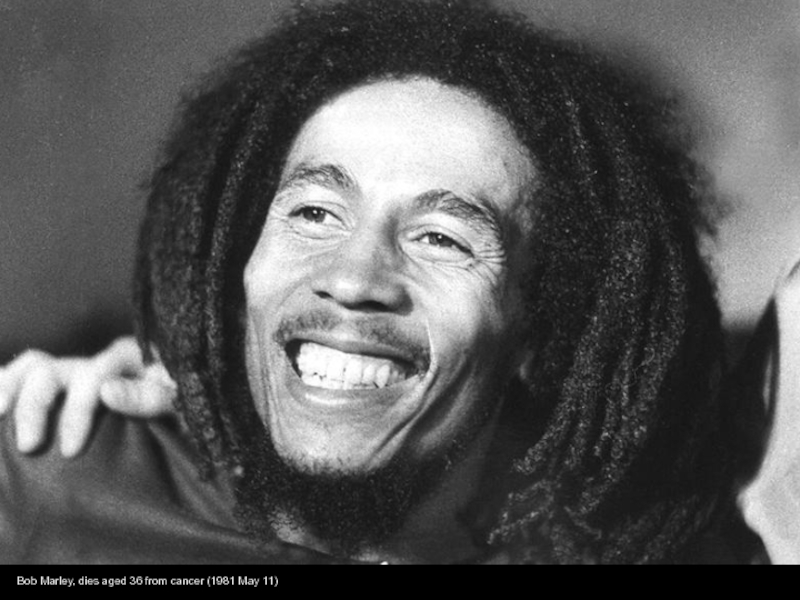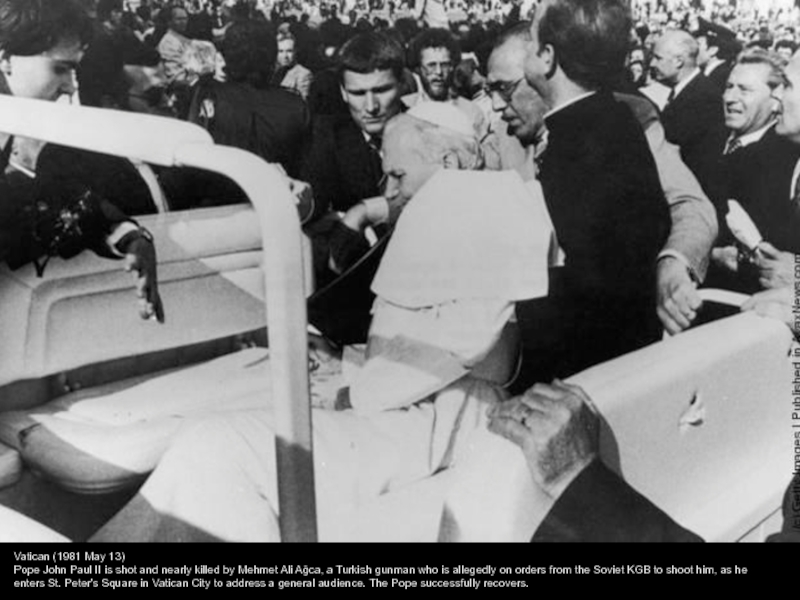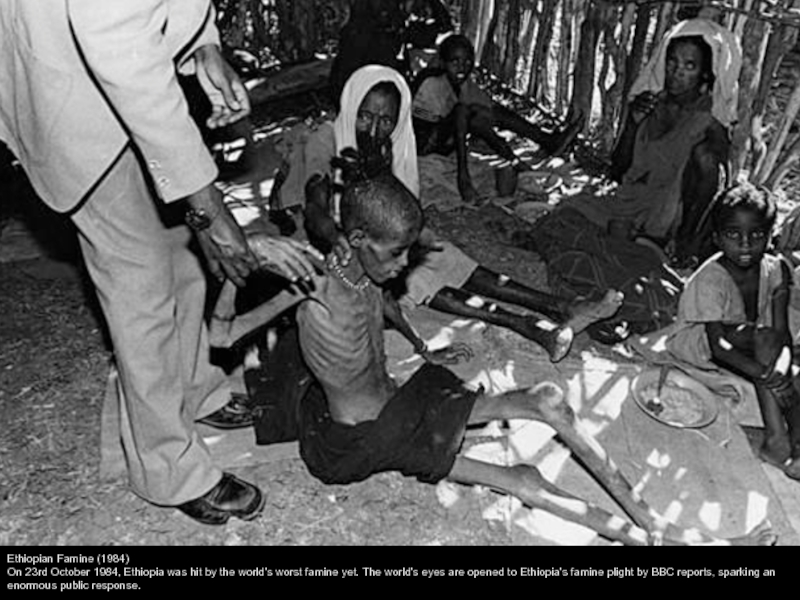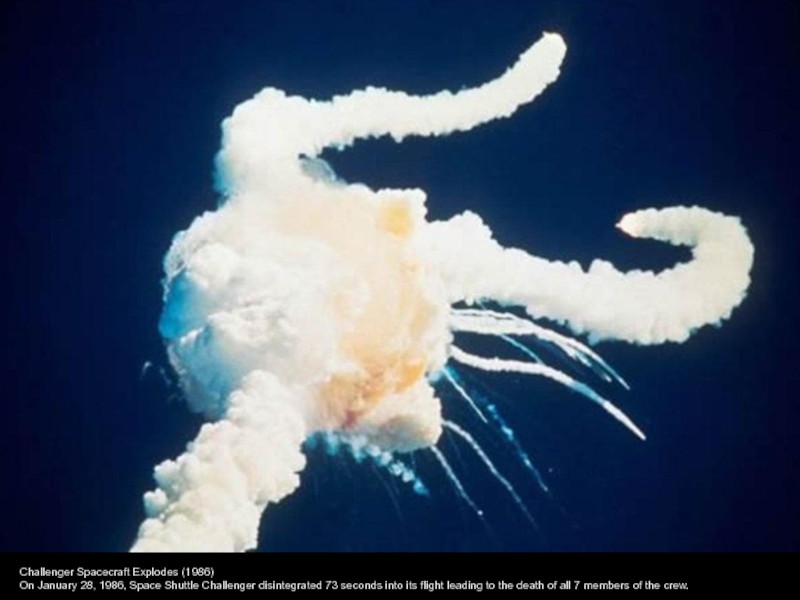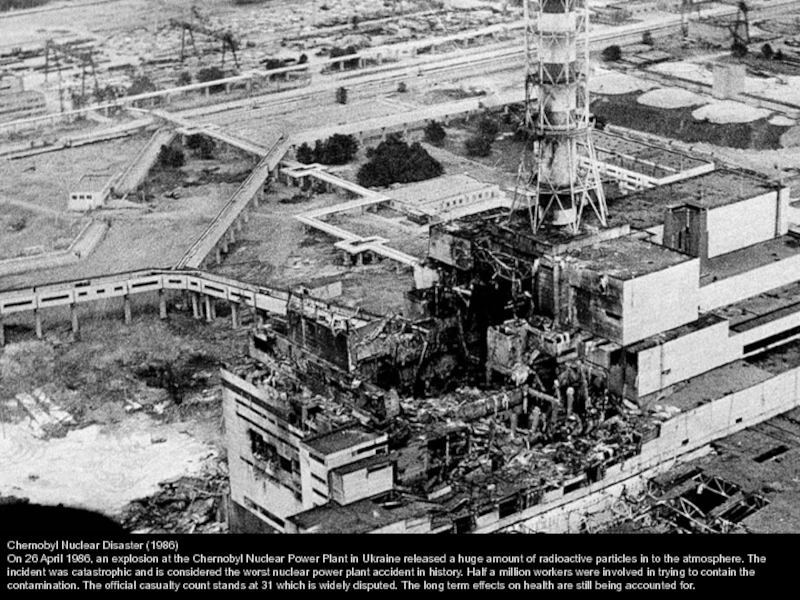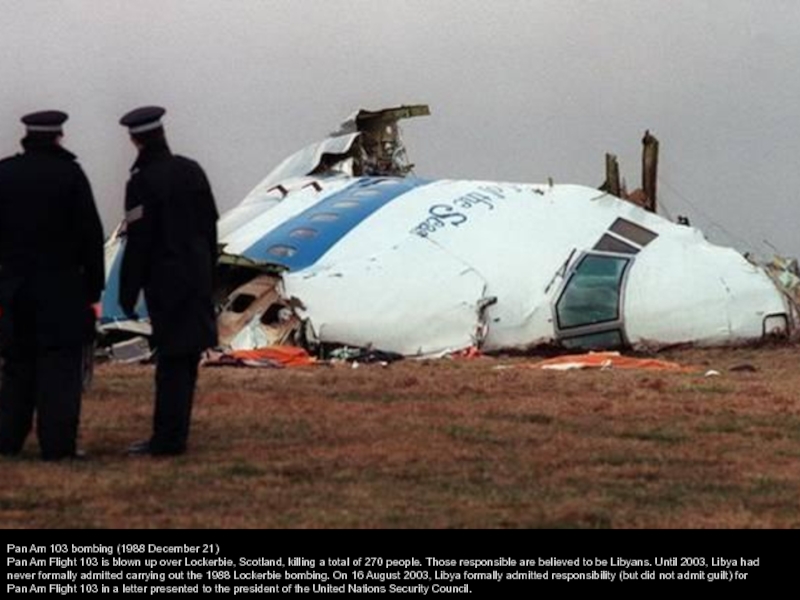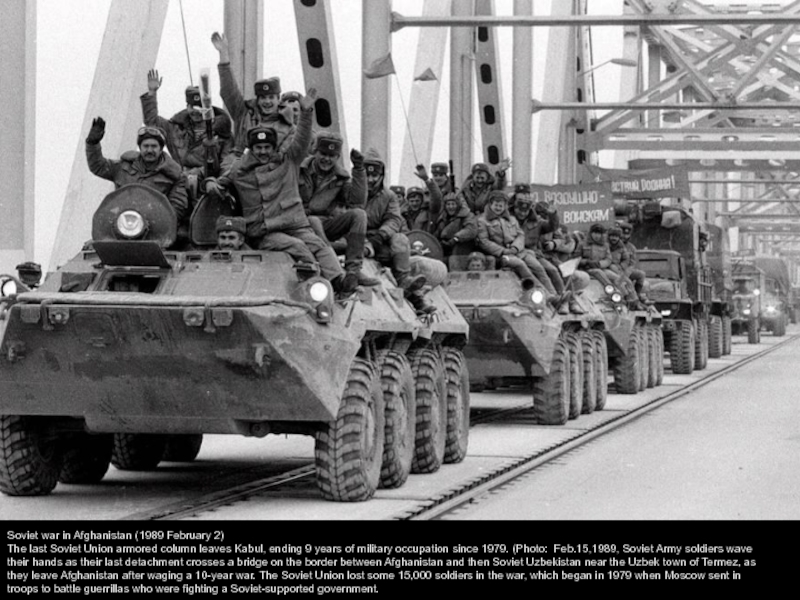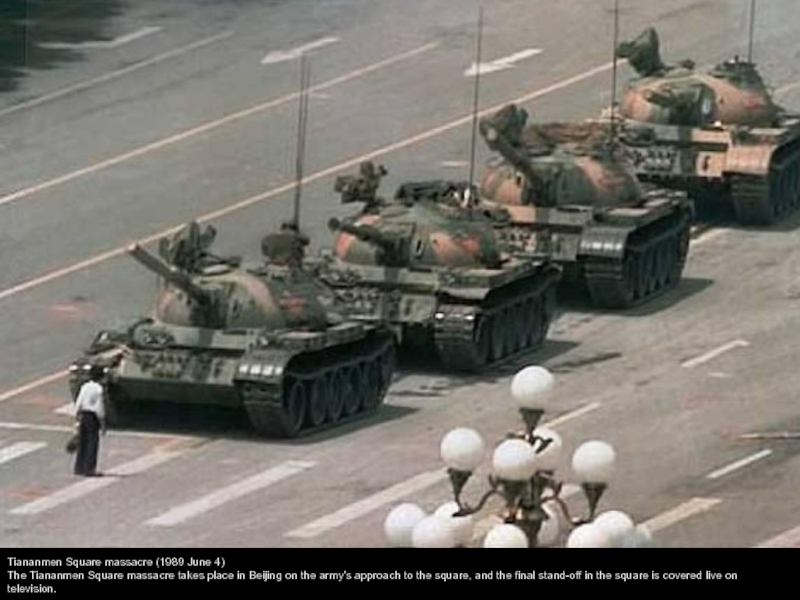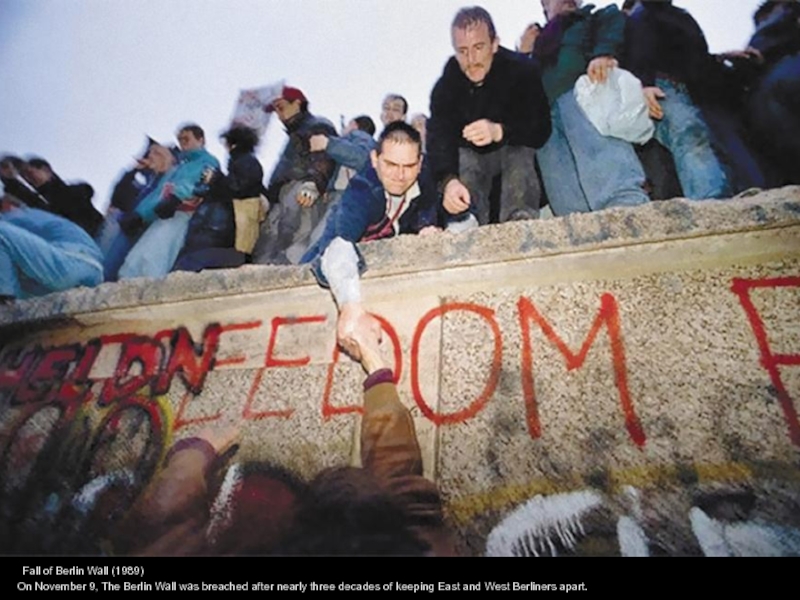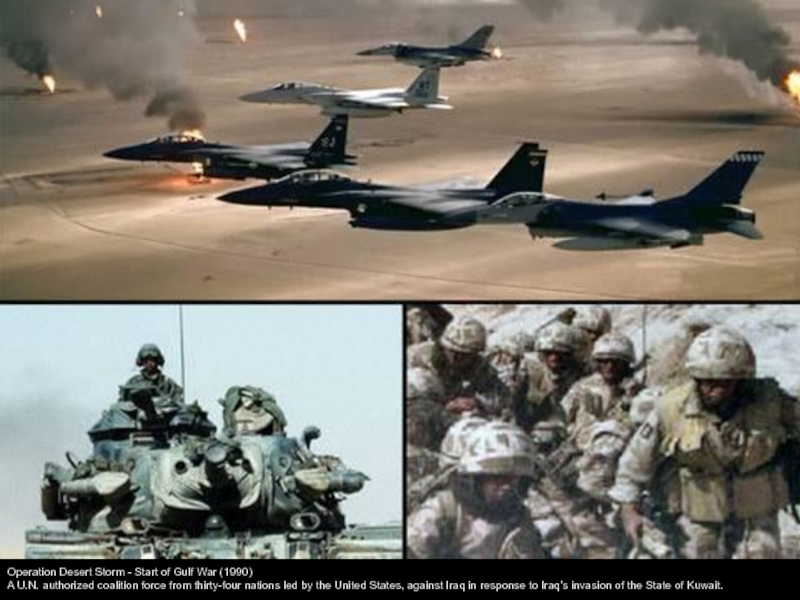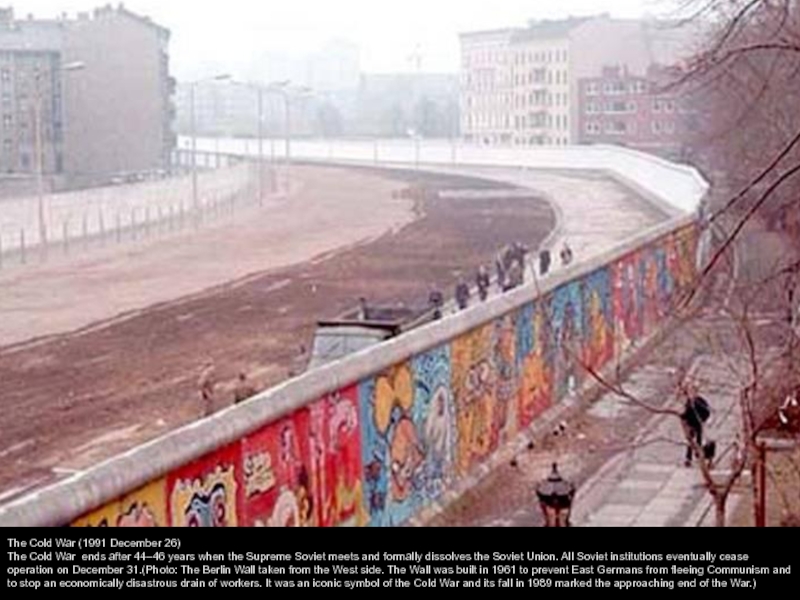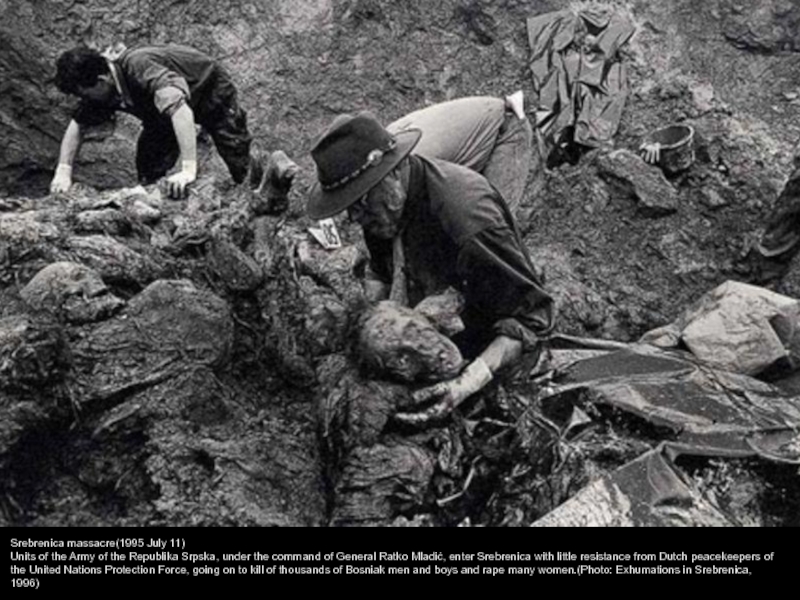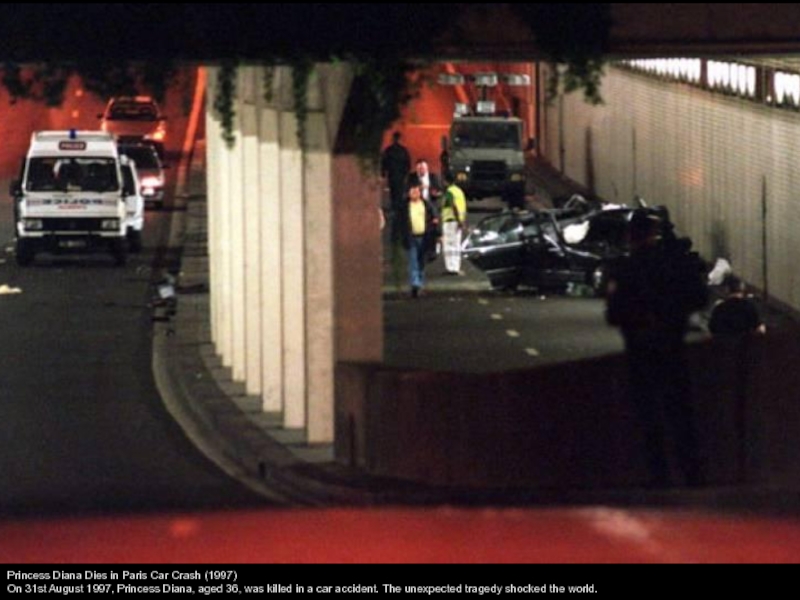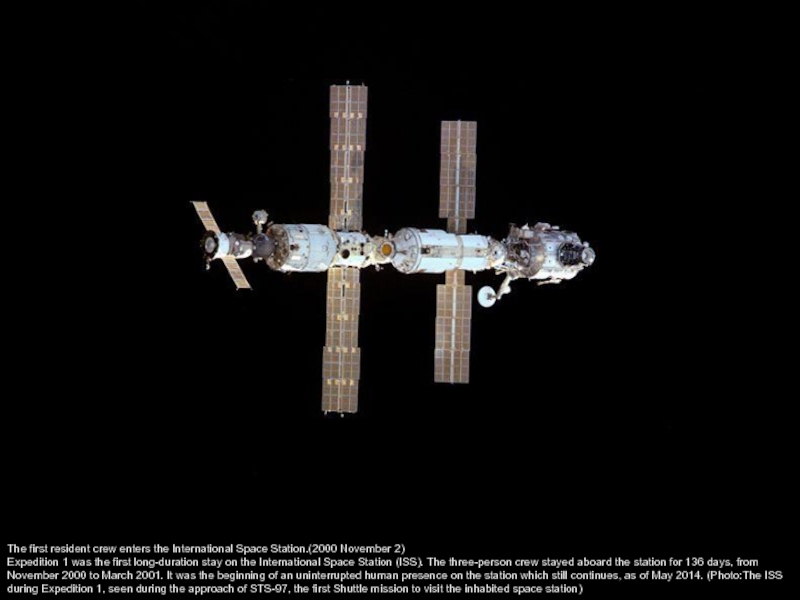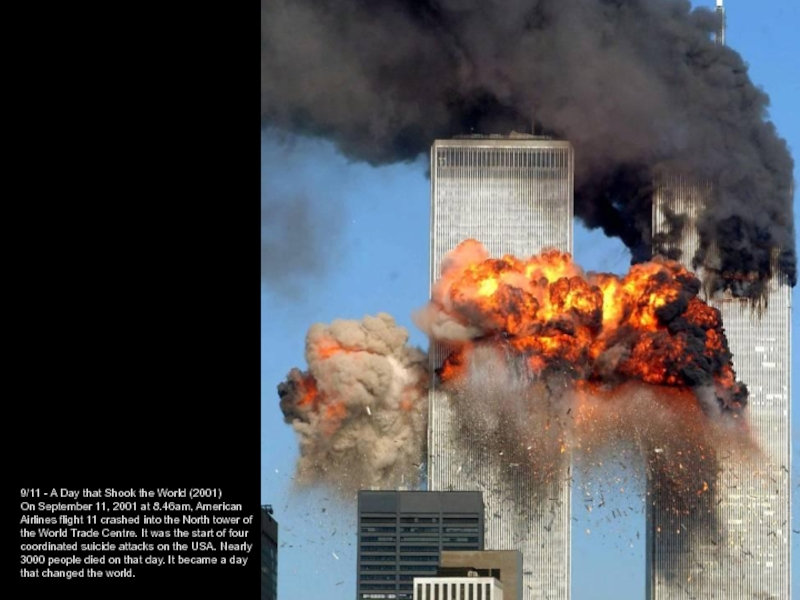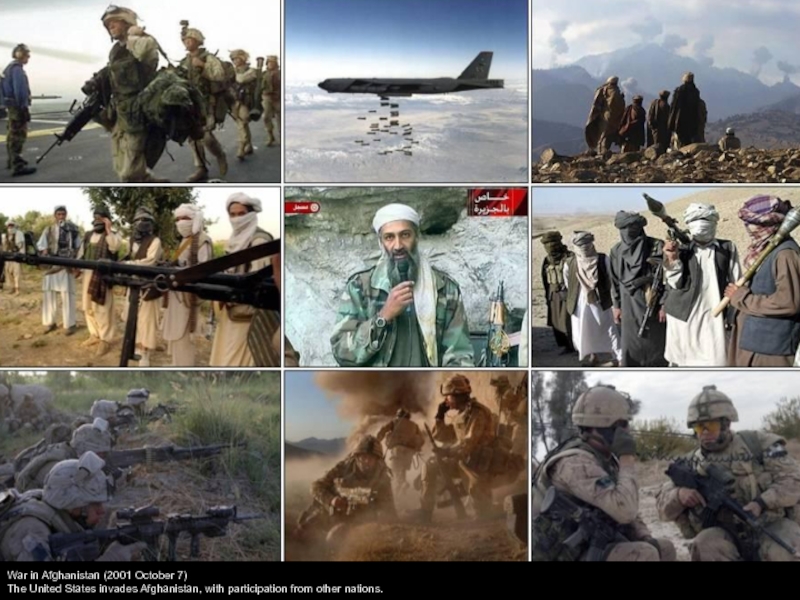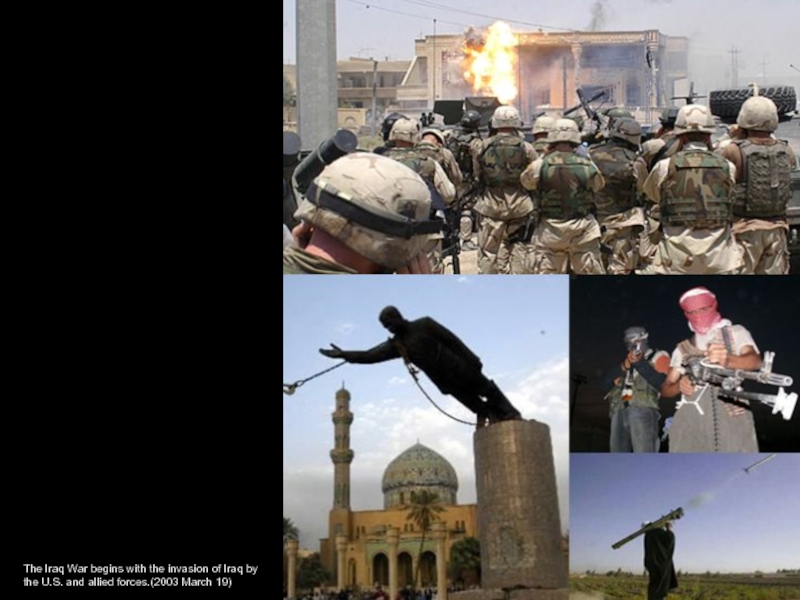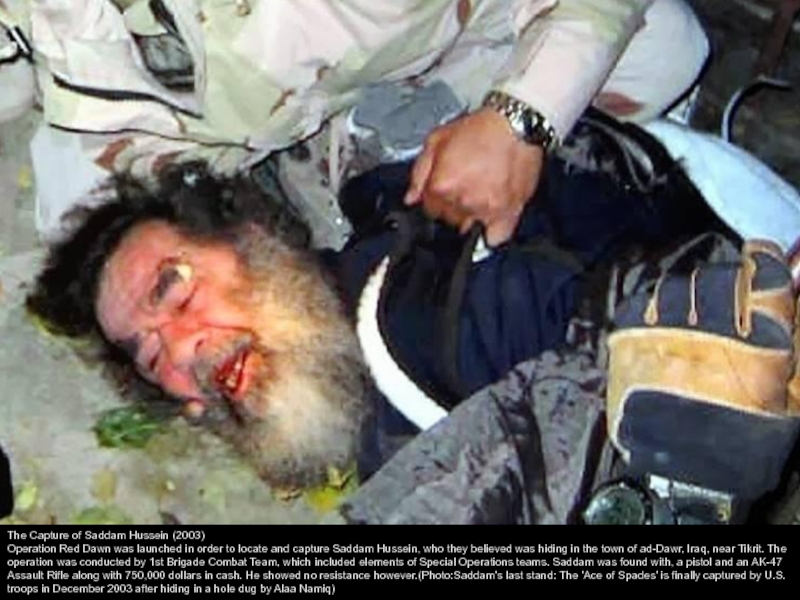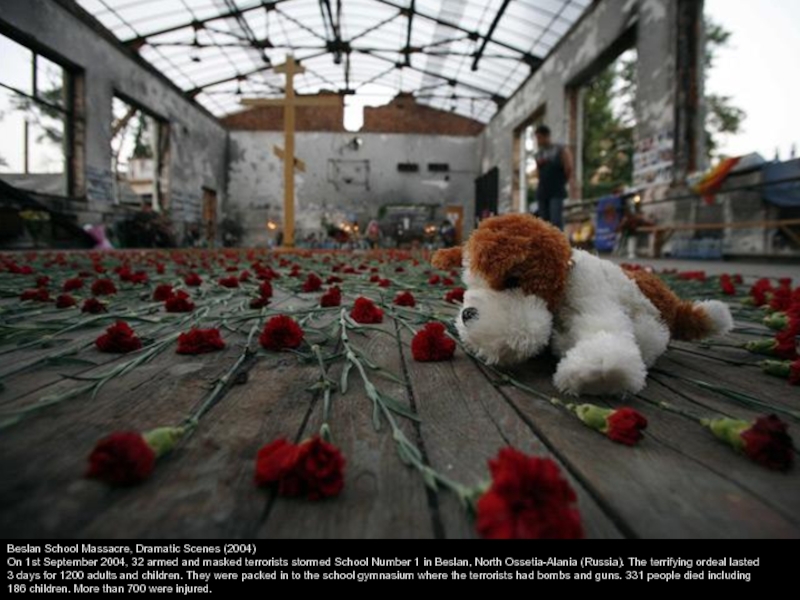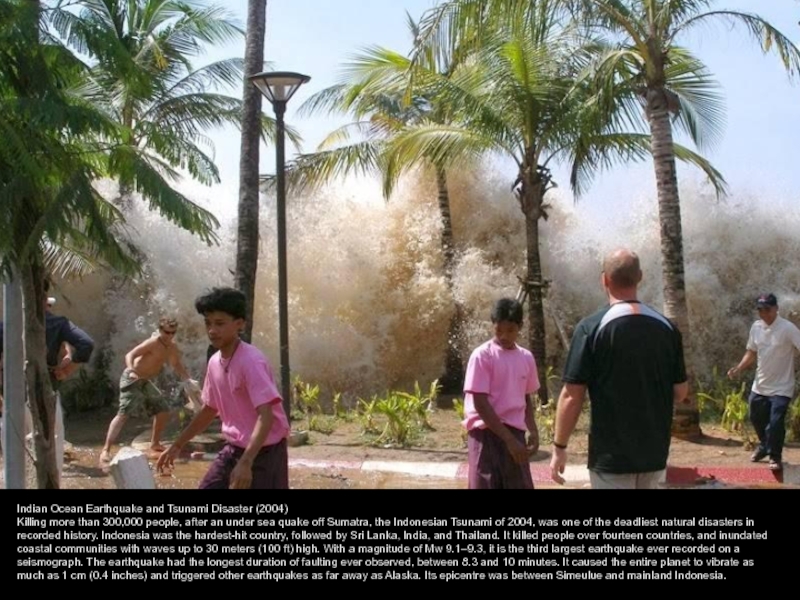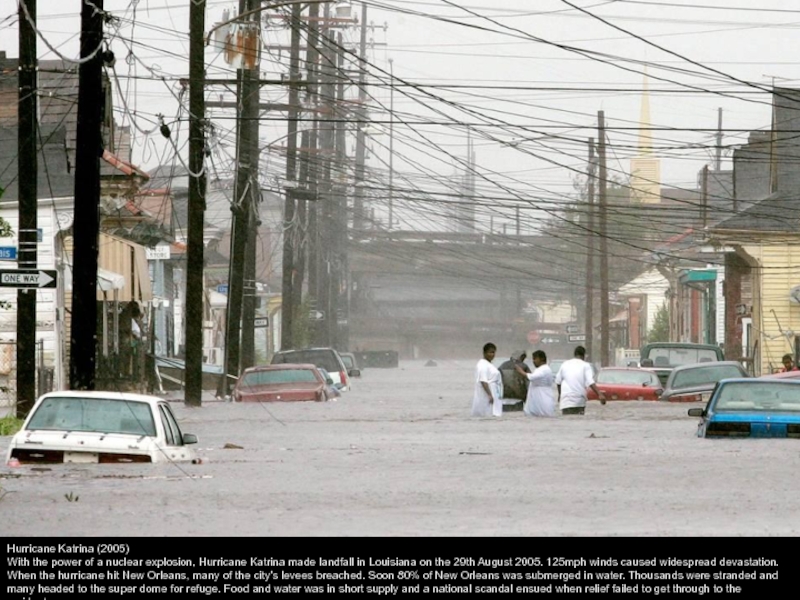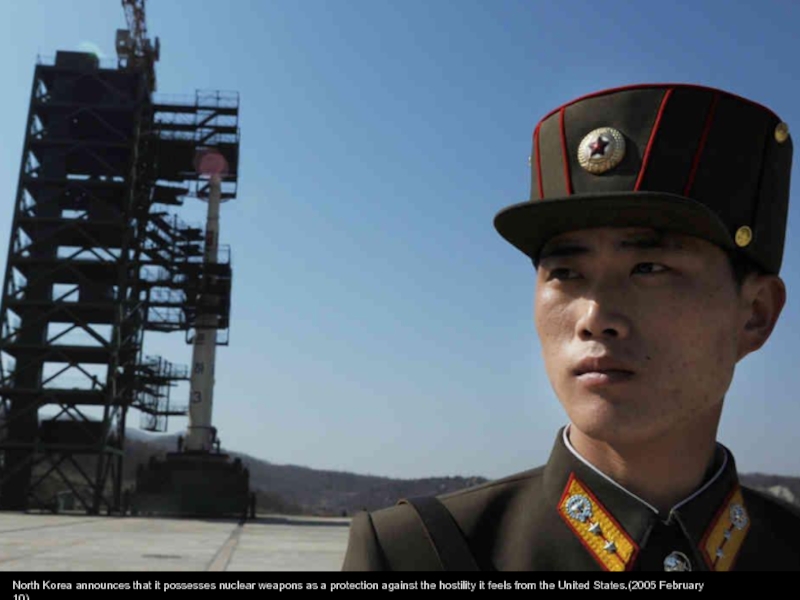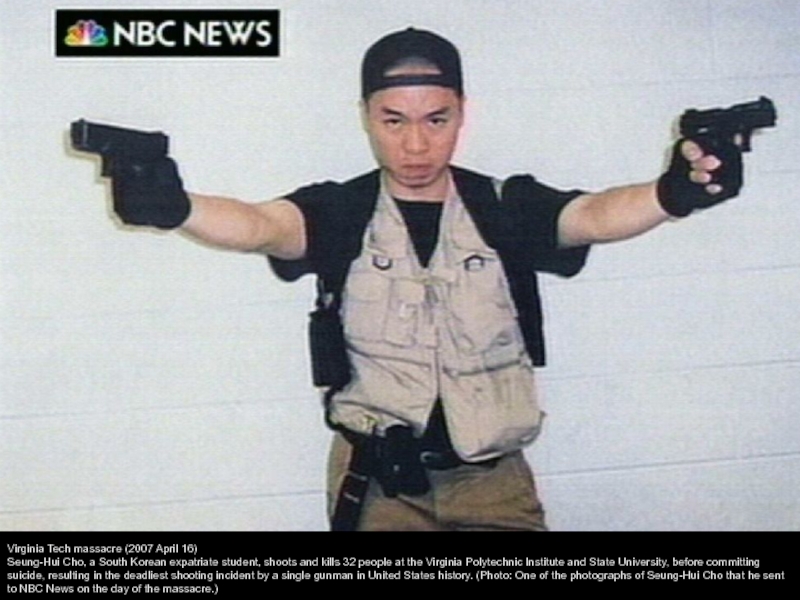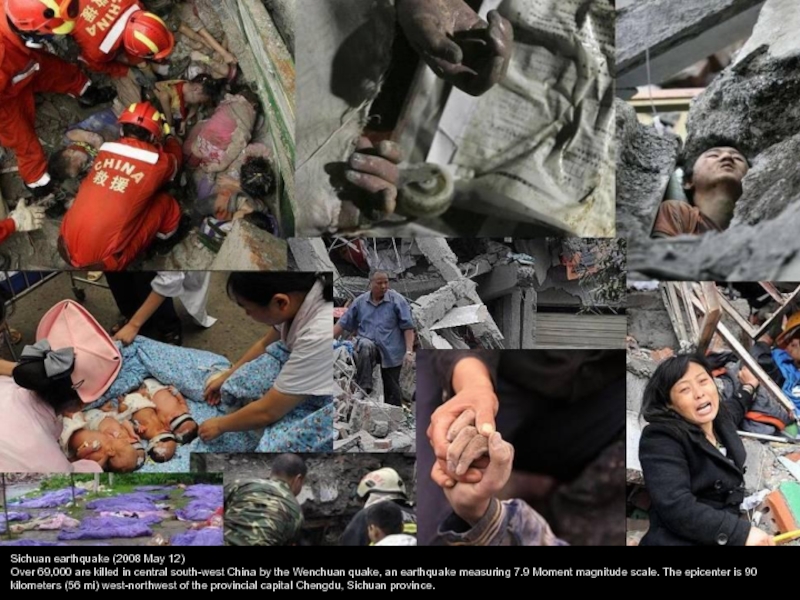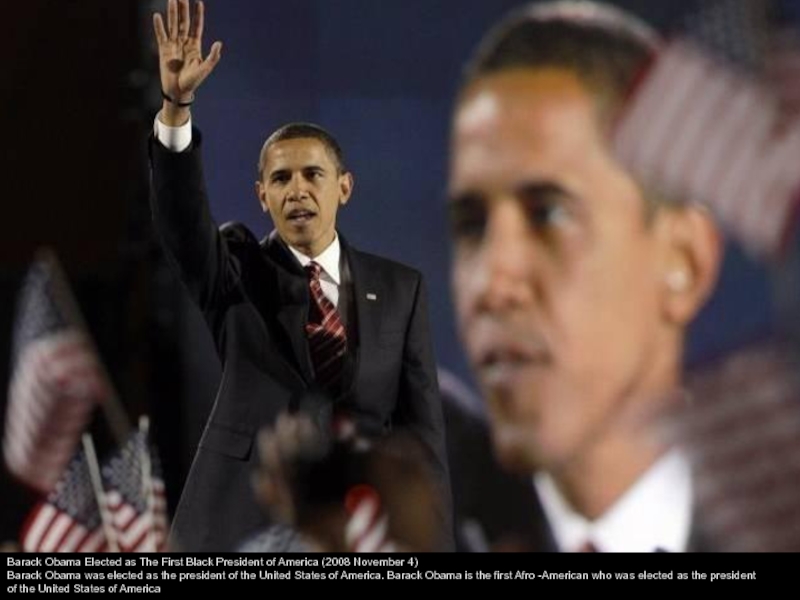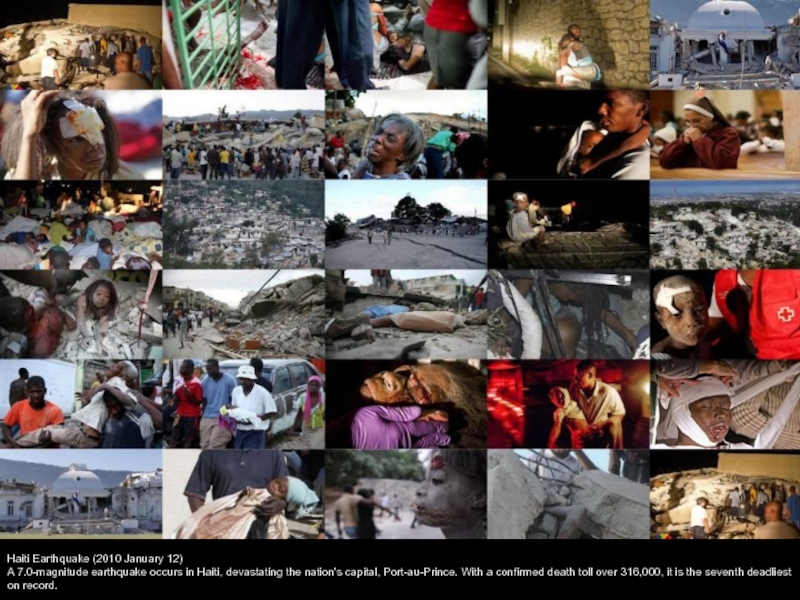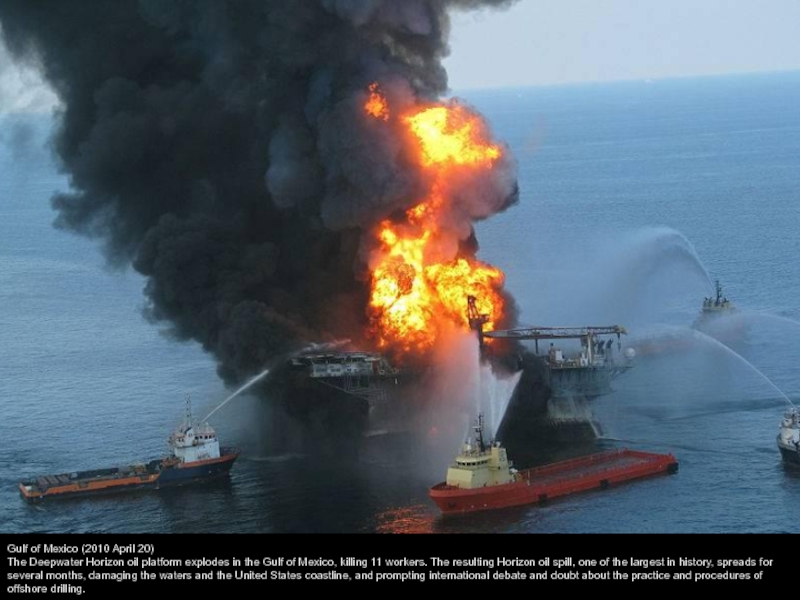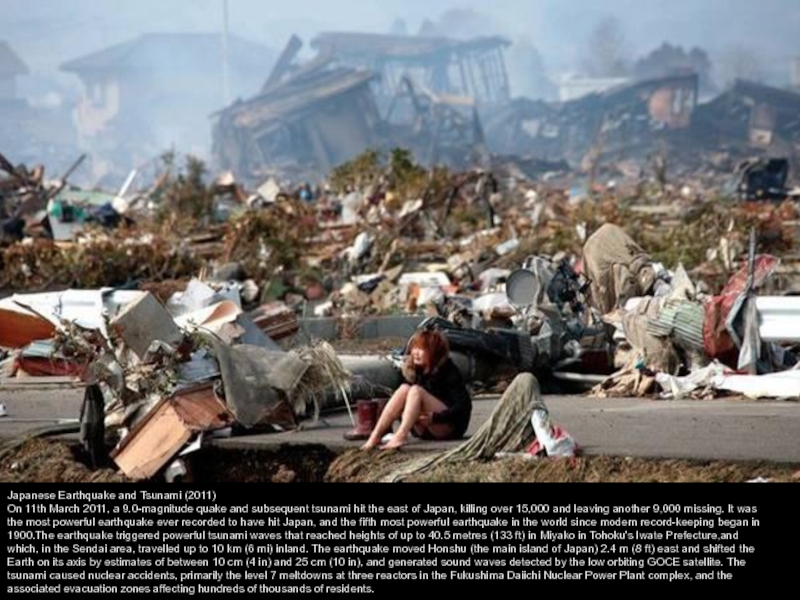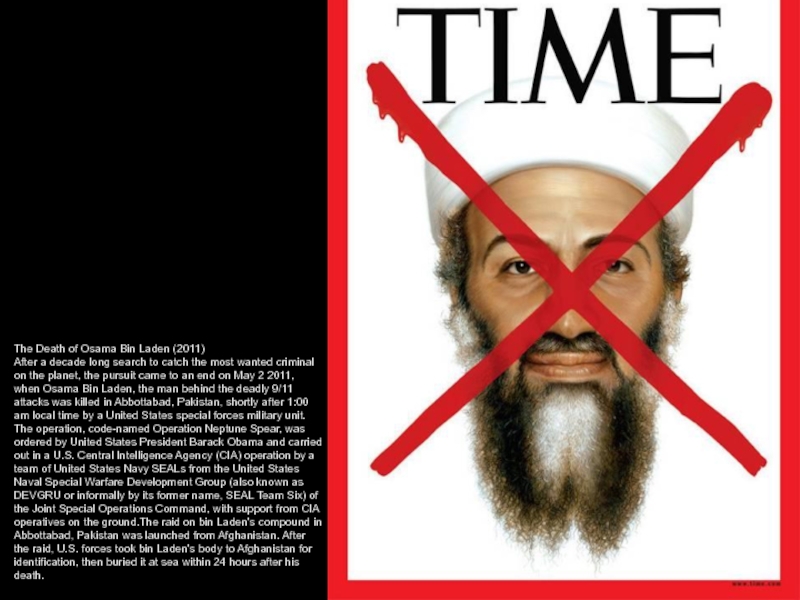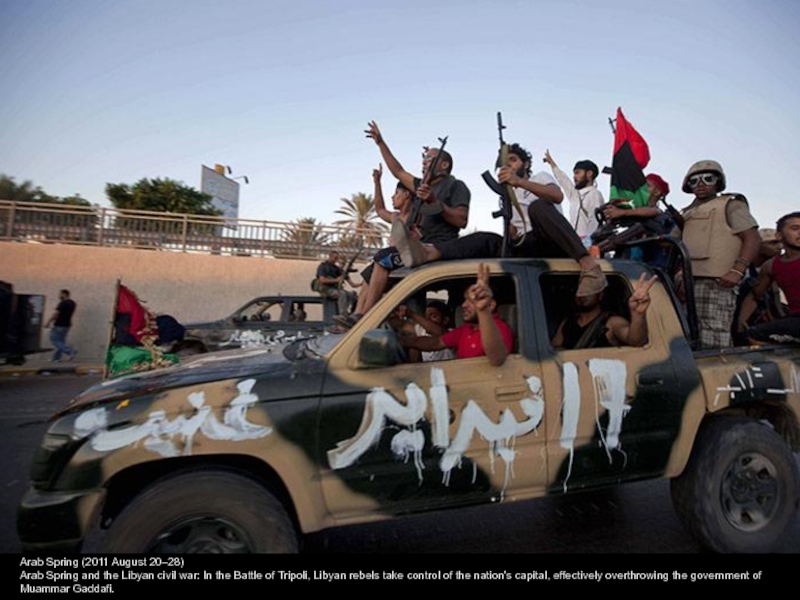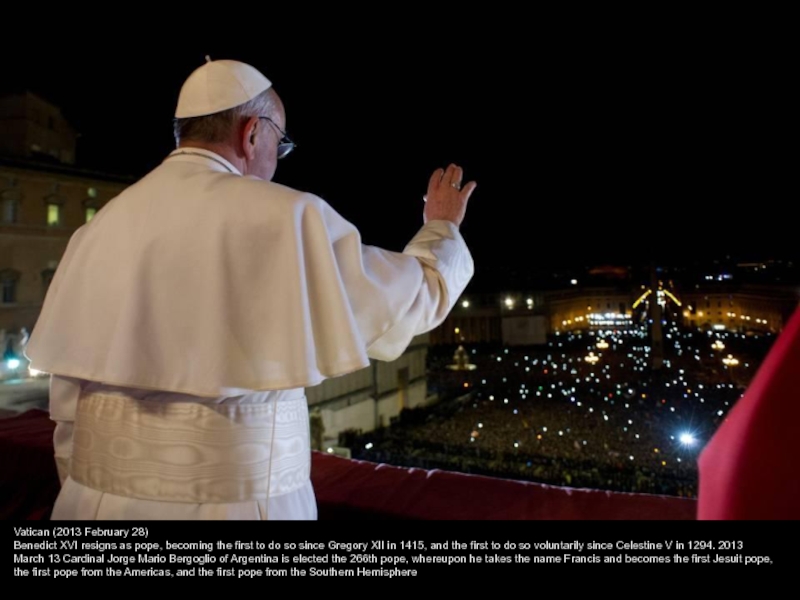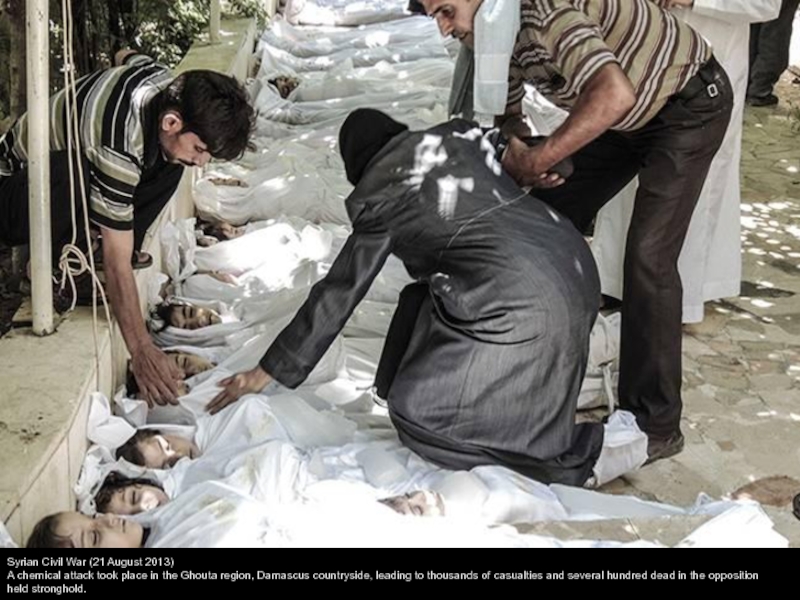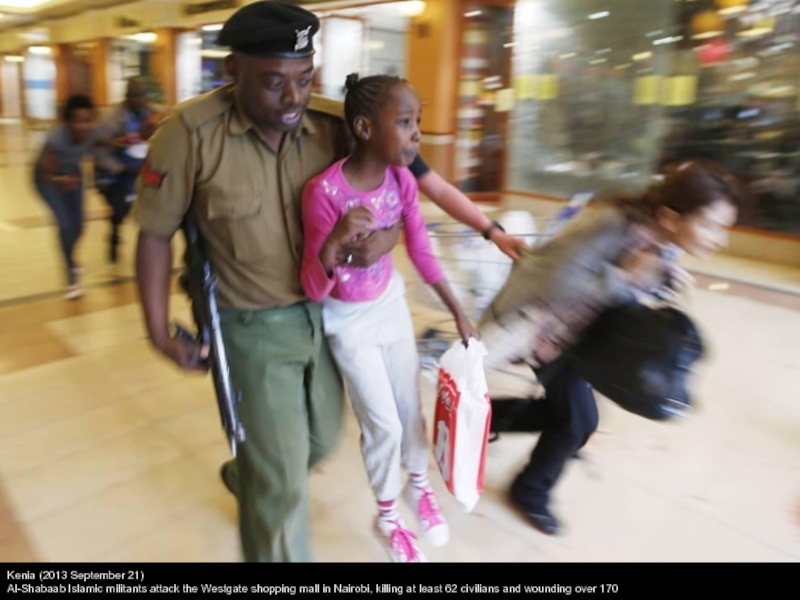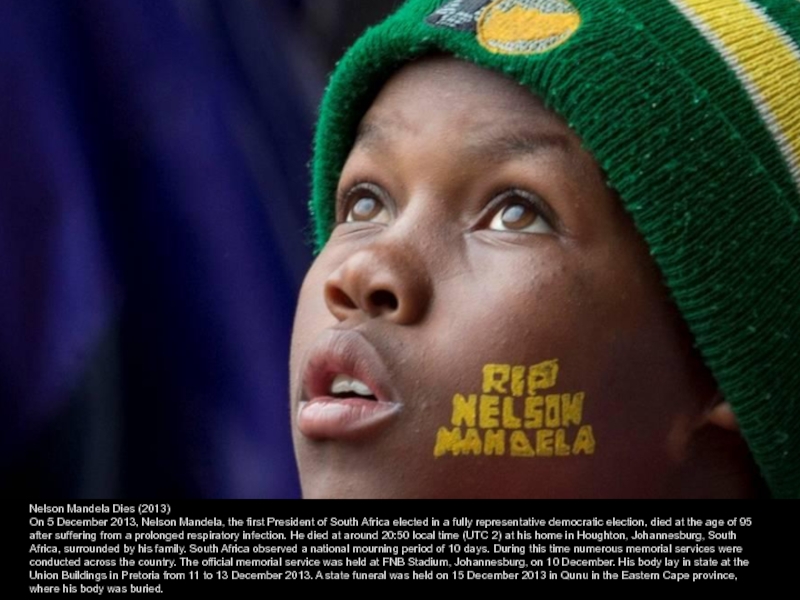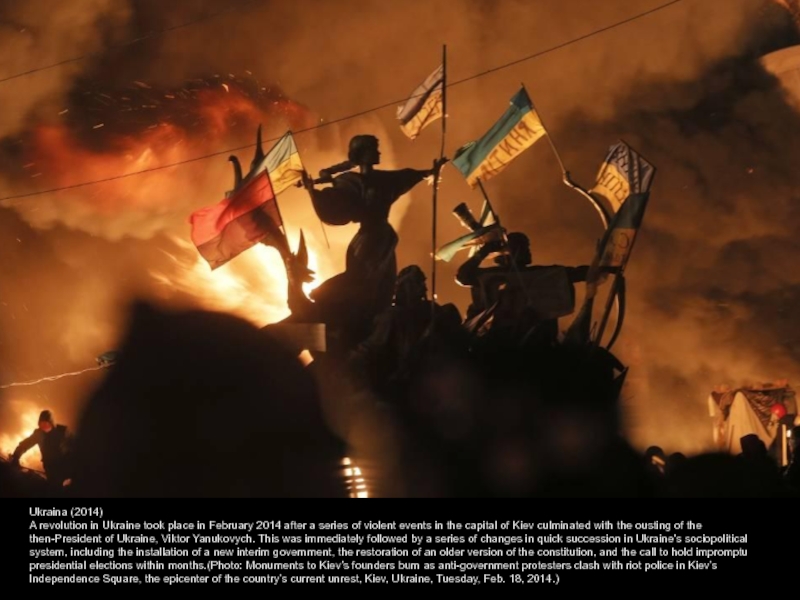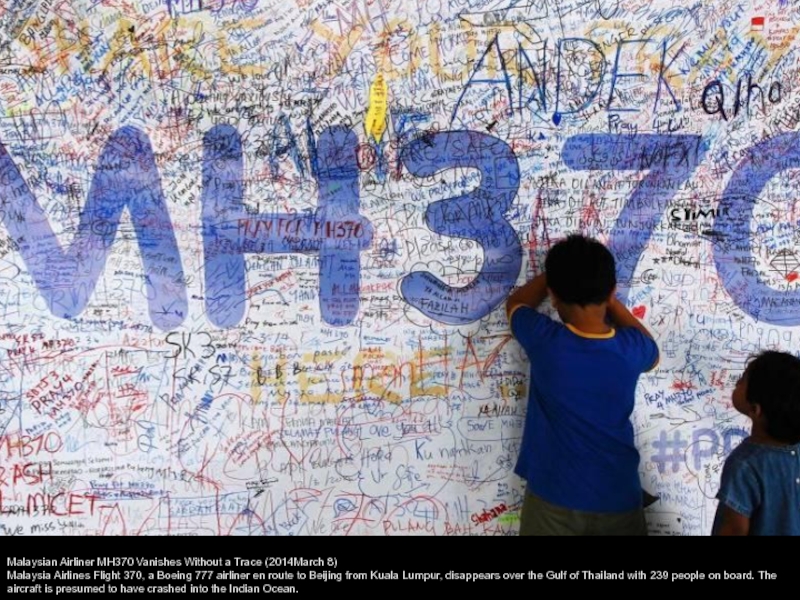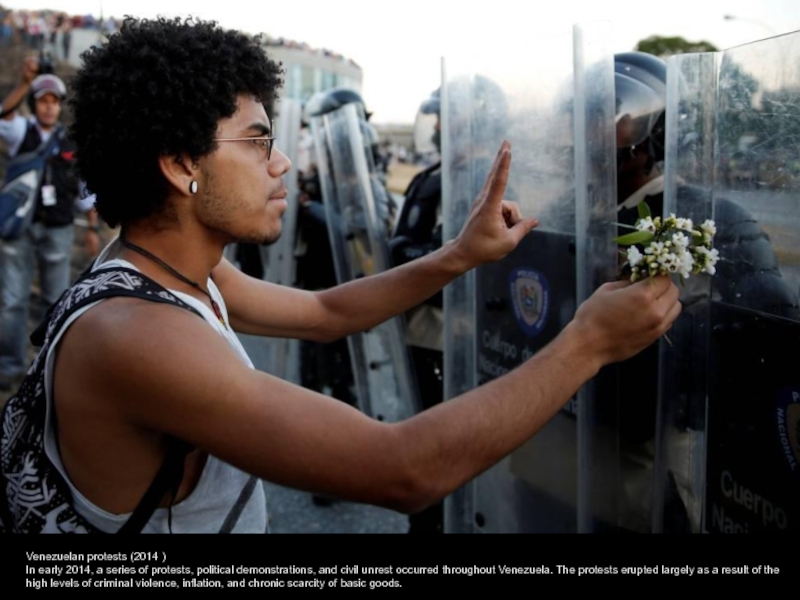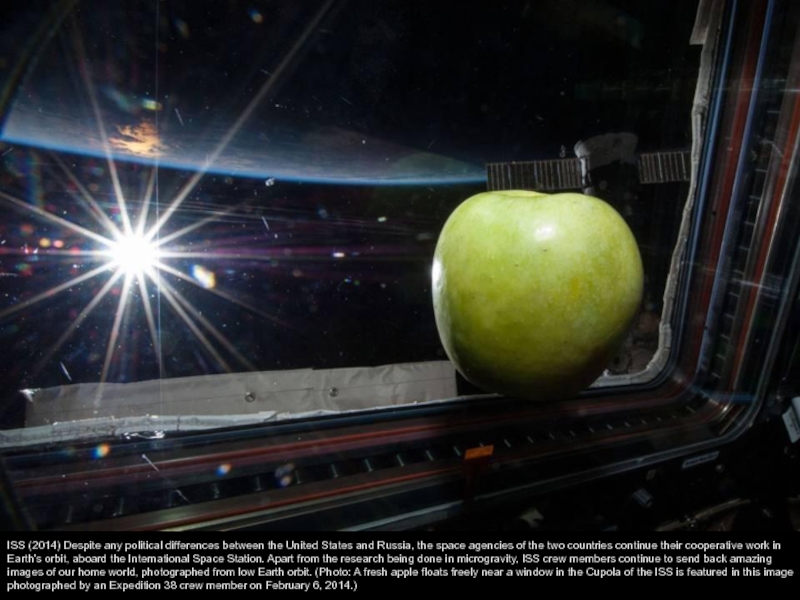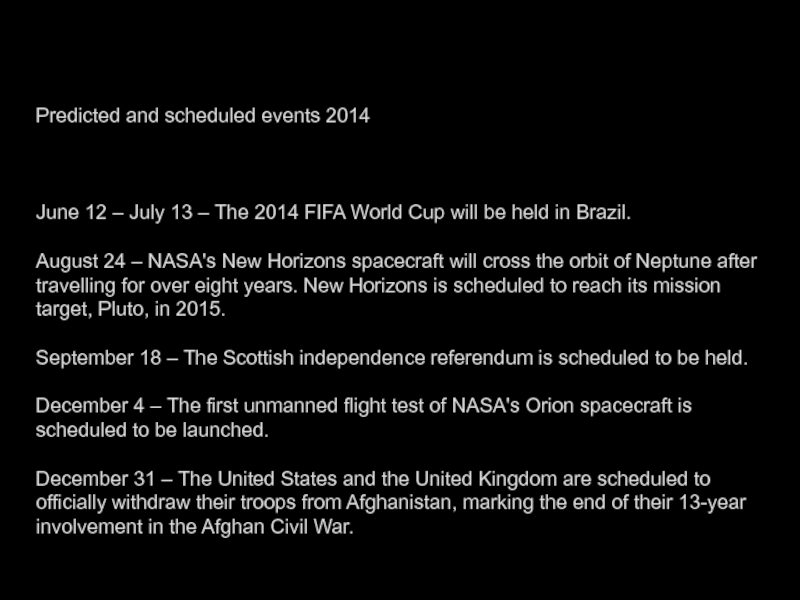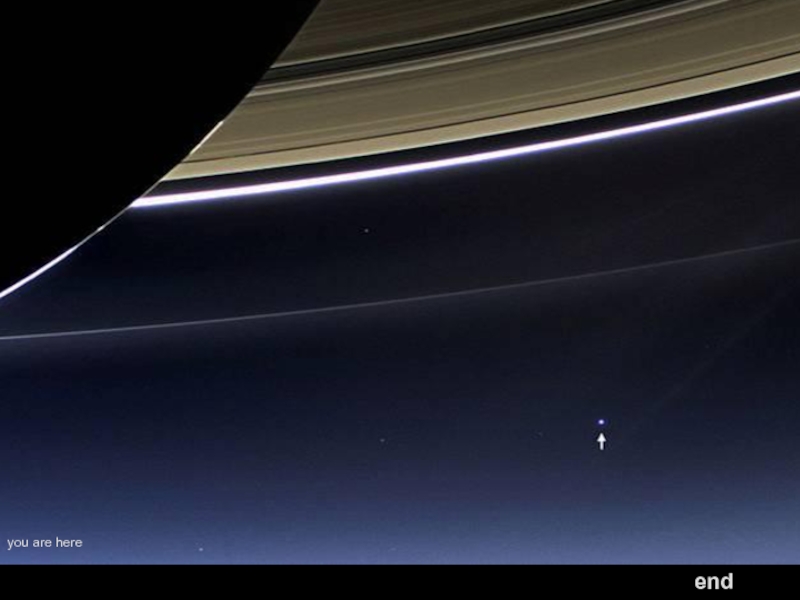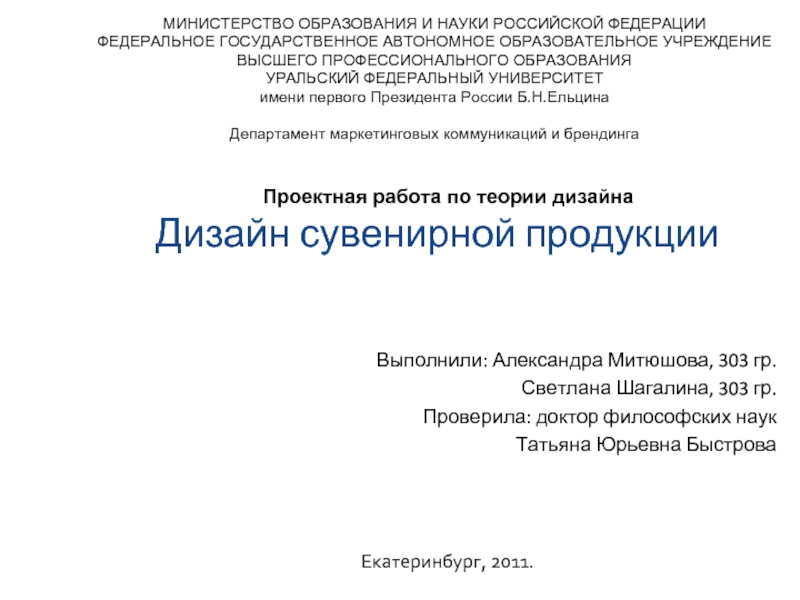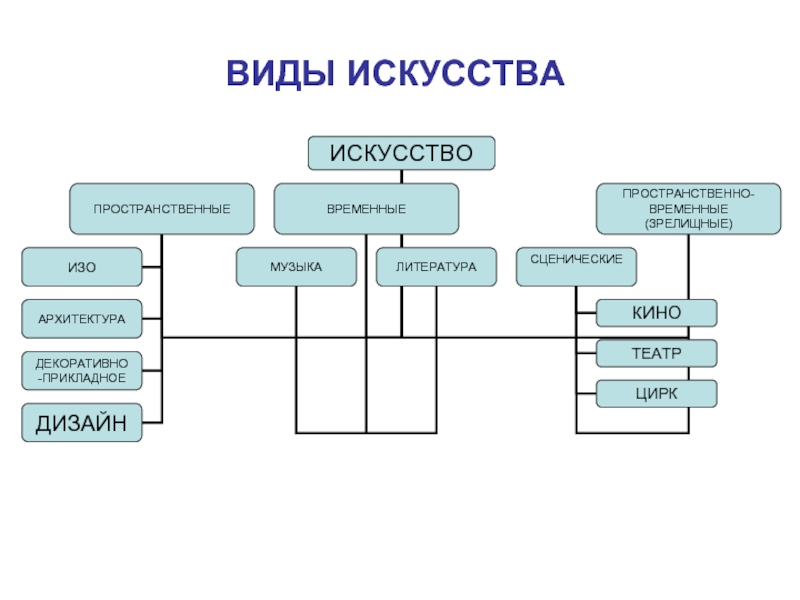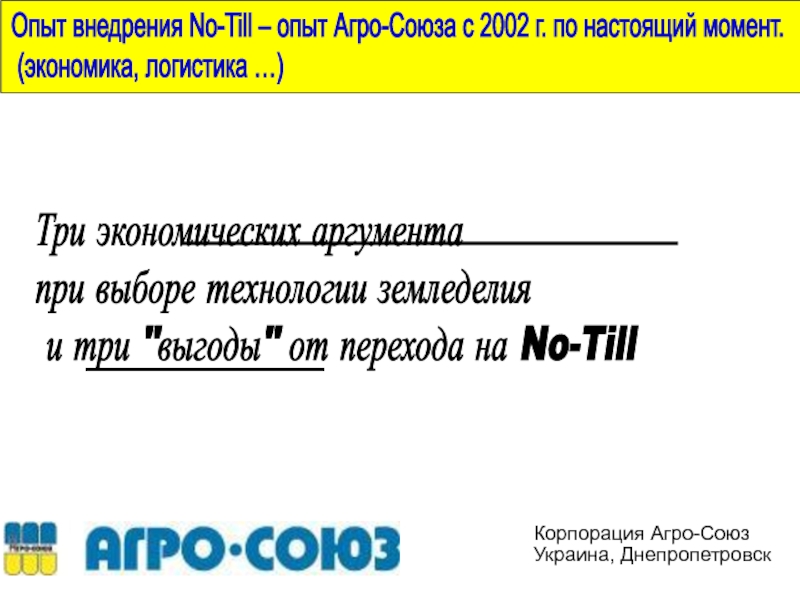- Главная
- Разное
- Дизайн
- Бизнес и предпринимательство
- Аналитика
- Образование
- Развлечения
- Красота и здоровье
- Финансы
- Государство
- Путешествия
- Спорт
- Недвижимость
- Армия
- Графика
- Культурология
- Еда и кулинария
- Лингвистика
- Английский язык
- Астрономия
- Алгебра
- Биология
- География
- Детские презентации
- Информатика
- История
- Литература
- Маркетинг
- Математика
- Медицина
- Менеджмент
- Музыка
- МХК
- Немецкий язык
- ОБЖ
- Обществознание
- Окружающий мир
- Педагогика
- Русский язык
- Технология
- Физика
- Философия
- Химия
- Шаблоны, картинки для презентаций
- Экология
- Экономика
- Юриспруденция
Events Across 100 Years That Completely Changed The World презентация
Содержание
- 4. Events Across 100 Years That Completely Changed The World
- 7. The events of modern history that proved
- 8. Assassination of Archduke Franz Ferdinand of Austria.(1914).
- 9. World War I(1914 July 28) Austria-Hungary
- 10. Battle of Gallipoli (1916) Last British
- 11. Abdication of the Tsar Nikolas II.
- 12. End of WWI and Armistice with Germany
- 13. Munich (1920 February 24) Adolf Hitler
- 14. March on Rome (1922 October 28) In
- 15. Suzanne Lenglen Breaks Wimbledon Record (1925) Suzanne
- 16. Charles Lindbergh Flies the Atlantic Solo (1927)
- 17. Wall Street Crash (1929) The Wall Street
- 18. Hitler Becomes German Chancellor (1933) In an
- 19. Night of the Long Knives in Germany,
- 20. King Edward VIII Abdicated (1936) Edward VIII
- 21. Hindenburg Airship Crash (1937) The world's largest
- 22. Hitler Annexes Austria (1938) Hitler achieves the
- 23. Germany Invades Poland (1939) On 1 September
- 24. London Blitz Begins (1940) On September 7,
- 25. WWII and Operation Barbarossa (1941 June 22)
- 26. Pearl Harbour Attacked (1941) December 7th 1941
- 27. WWII Second Battle of El Alamein (1942
- 28. WWII: In Russia, the Battle of Stalingrad
- 29. WWII D-Day (1944 June 6) 155,000 Allied
- 30. Liberation of Paris (1944) On August 25th,
- 31. Churchill, Stalin and Roosevelt Meet at Yalta
- 32. Germans Surrender to Montgomery (1945) On 4
- 33. VE Day Celebrations (1945 May 8)
- 34. Hiroshima Atomic Bomb (1945) The first atom
- 35. Nuremberg Trials (1946) September 30, 1946
- 36. India and Pakistan Gain Independence (1947) Viscount
- 37. Berlin Airlift Begins (1948) Following a Soviet
- 38. Mao's Communists Take Over China (1949) On
- 39. Korean War Started (1950) On
- 40. George VI dies aged 56 after a
- 41. The explosion of the first hydrogen
- 42. The Death of Stalin (1953 March 5)
- 43. Sir Edmund Hillary and Tenzing Norgay become
- 44. Launch of First Nuclear Submarine (1954 January
- 45. Le Mans 24 Hour Race Disaster (1955)
- 46. Pele's World Cup Final Performance (1958) June
- 47. Cuba (1959 January) Fulgencio Batista flees Havana
- 48. Buenos Aires (1960 May 11) Four Mossad
- 49. United States presidential election (1960 November 8)
- 50. First Man in Space (1961) Soviet cosmonaut
- 51. Berlin Wall Erected (1961) In August 1961,
- 52. Cuban Missile Crisis (1962) The Cuban Missle
- 53. Martin Luther King Delivers His "I have
- 54. JFK Assassinated (1963) On November 22 1963,
- 55. Beatlemania Arrives (1964) John Lennon, Ringo Starr,
- 56. The Six-Day War Begins (1967) Also known
- 57. Violent Anti-Vietnam Riots in London (1968) On
- 58. Paris student riots: One million march through the streets of Paris.(1968 May 13)
- 59. The Prague Spring of political liberalization ends,
- 60. Concorde Flies for the First Time
- 61. Armstrong Sets Foot on the Moon (1969)
- 62. Bloody Sunday in Northern Ireland (1972) On
- 63. Chile (1973 September 11) Chile's democratically elected
- 64. Nixon Resigns in Shame (1974) In the
- 65. Vietnam War and the Fall of Saigon
- 66. Elvis Presley, the "king of rock and
- 67. Exiled Religious Leader Ayatollah Khomeini returns
- 68. John Lennon is shot dead outside his
- 69. Bob Marley, dies aged 36 from cancer (1981 May 11)
- 70. Vatican (1981 May 13) Pope John
- 71. Ethiopian Famine (1984) On 23rd October 1984,
- 72. Challenger Spacecraft Explodes (1986) On January 28,
- 73. Chernobyl Nuclear Disaster (1986) On 26 April
- 74. Pan Am 103 bombing (1988 December 21)
- 75. Soviet war in Afghanistan (1989 February 2)
- 76. Tiananmen Square massacre (1989 June 4) The
- 77. Fall of Berlin Wall (1989) On
- 78. Nelson Mandela Released from Prison (1990) On
- 79. Operation Desert Storm - Start of Gulf
- 80. The Cold War (1991 December 26)
- 81. Srebrenica massacre(1995 July 11) Units of
- 82. Princess Diana Dies in Paris Car Crash
- 83. The first resident crew enters the International
- 84. 9/11 - A Day that Shook the
- 85. War in Afghanistan (2001 October 7)
- 86. The Iraq War begins with the invasion
- 87. The Capture of Saddam Hussein (2003) Operation
- 88. Beslan School Massacre, Dramatic Scenes (2004) On
- 89. Indian Ocean Earthquake and Tsunami Disaster (2004)
- 90. Hurricane Katrina (2005) With the power of
- 91. North Korea announces that it possesses nuclear
- 92. Virginia Tech massacre (2007 April 16)
- 93. Sichuan earthquake (2008 May 12)
- 94. Barack Obama Elected as The First Black
- 95. Haiti Earthquake (2010 January 12) A 7.0-magnitude
- 96. Gulf of Mexico (2010 April 20)
- 97. Japanese Earthquake and Tsunami (2011) On 11th
- 98. The Death of Osama Bin Laden (2011)
- 99. Arab Spring (2011 August 20–28) Arab
- 100. Vatican (2013 February 28) Benedict XVI resigns
- 101. Syrian Civil War (21 August 2013) A
- 102. Kenia (2013 September 21) Al-Shabaab Islamic militants
- 103. Nelson Mandela Dies (2013) On 5 December
- 104. Ukraina (2014) A revolution in Ukraine
- 105. Malaysian Airliner MH370 Vanishes Without a Trace
- 106. Venezuelan protests (2014 ) In early 2014,
- 107. ISS (2014) Despite any political differences between
- 108. Predicted and scheduled events 2014
- 109. end cast
Слайд 7The events of modern history that proved to bring about a
massive change in the world. These are days on which political revolutions, technological breakthroughs, unforeseen natural disasters and sporting triumphs took place, and whose effects were felt the world-over.
Слайд 8Assassination of Archduke Franz Ferdinand of Austria.(1914).
19-year-old Serbian nationalist Gavrilo Princip
assassinates Archduke Franz Ferdinand of Austria and his wife, Duchess Sophie, in Sarajevo, Bosnia and Herzegovina, triggering the July Crisis and World War I.
Слайд 9World War I(1914 July 28)
Austria-Hungary declares war on Serbia and
its army bombards Belgrade. World War I, also known as the First World War, was a global war centred in Europe that began on 28 July 1914 and lasted until 11 November 1918. More than 9 million combatants were killed; a casualty rate exacerbated by the belligerents' technological and industrial sophistication, and tactical stalemate. It was one of the deadliest conflicts in history, paving the way for major political changes, including revolutions in many of the nations involved.
Слайд 10Battle of Gallipoli (1916)
Last British troops evacuated from Gallipoli, as
the Ottoman Empire prevails over a joint British and French operation to capture Istanbul. Casualty figures for the campaign vary between sources, but it is believed that by the time the Gallipoli Campaign ended over 100,000 men were dead, including 56,000–68,000 Turkish and around 53,000 British and French soldiers.
Слайд 11
Abdication of the Tsar Nikolas II. (1917)
On March 15, 1917 following
the Feburary Revolution, the Russian Tsar Nicholas abdicated, heralding the end of the Russian imperial empire. His reign saw Imperial Russia go from being one of the foremost great powers of the world to economic and military collapse. Enemies nicknamed him Nicholas the Bloody. Later he and his family were brutally murdered by the Bolsheviks on the night of July 16/17 1918. (Photo:Tsar Nicholas II in detention after his abdication in March 1917)
Слайд 12End of WWI and Armistice with Germany (Compiègne) (1918 November 11)
Germany
signs an armistice agreement with the Allies between 5:12 AM and 5:20 AM in Marshal Foch's railroad car in Compiègne Forest in France. It becomes official on the 11th hour of the 11th day of the 11th month.(Photo: Signatories to the Armistice with Germany (Compiègne), ending WWI, pose outside Marshal Foch's railway carriage)
Слайд 13Munich (1920 February 24)
Adolf Hitler presents his National Socialist Program
in Munich to the German Workers' Party (Deutsche Arbeiterpartei) which renames itself as the Nazi Party (Nationalsozialistische Deutsche Arbeiterpartei)
Слайд 14March on Rome (1922 October 28)
In Italy, the March on Rome
brings the National Fascist Party and Benito Mussolini to power.(Photo: Benito Mussolini and Fascist Blackshirts during the March on Rome)
Слайд 15Suzanne Lenglen Breaks Wimbledon Record (1925)
Suzanne Lenglen wins an unprecedented sixth
singles title at Wimbledon in the space of seven years. (Photo: Suzanne Lenglen hits the final shot that won her the legendary Wimbledon game in 1925.)
Слайд 16Charles Lindbergh Flies the Atlantic Solo (1927)
Charles Lindbergh achieves the world's
first non-stop transatlantic flight.
Слайд 17Wall Street Crash (1929)
The Wall Street Crash of 1929, also known
as Black Tuesday or the Stock Market Crash of 1929, began in late October 1929 and was the most devastating stock market crash in the history of the United States, when taking into consideration the full extent and duration of its fallout.The crash signalled the beginning of the 10-year Great Depression that affected all Western industrialized countries
Слайд 18Hitler Becomes German Chancellor (1933)
In an attempt to form a stable
coalition government, Hitler is appointed Chancellor of Germany.
Слайд 19Night of the Long Knives in Germany, Adolf Hitler becomes Führer
of Germany (1934 June, August)
Nazis purge the Sturmabteilung (SA), the left-wing Strasserist faction of the Nazi Party and prominent conservative anti-Nazis in a series of political murders. Adolf Hitler becomes Führer of Germany, or head of state combined with that of Chancellor following the death of President Paul von Hindenburg. In a referendum, 90% of the German population approves of Hitler's assumption of presidential powers as Führer and Reichskanzler.
Nazis purge the Sturmabteilung (SA), the left-wing Strasserist faction of the Nazi Party and prominent conservative anti-Nazis in a series of political murders. Adolf Hitler becomes Führer of Germany, or head of state combined with that of Chancellor following the death of President Paul von Hindenburg. In a referendum, 90% of the German population approves of Hitler's assumption of presidential powers as Führer and Reichskanzler.
Слайд 20King Edward VIII Abdicated (1936)
Edward VIII abdicated in order to marry
the American divorcee Wallis Simpson. King Edward VIII of the United Kingdom signs an instrument of abdication at Fort Belvedere, Surrey in the presence of his three brothers, The Duke of York, The Duke of Gloucester and The Duke of Kent. The British Parliament passes His Majesty's Declaration of Abdication Act 1936 on behalf of the UK, Australia, New Zealand and South Africa. (Photo Ed VIII prepares to give his abdication speech, in December 1936.)
Слайд 21Hindenburg Airship Crash (1937)
The world's largest airship, the Hindenburg, is destroyed
in a spectacular fire which resulted in the death of all 33 passengers and crew on board the fatal flight.
Слайд 22Hitler Annexes Austria (1938)
Hitler achieves the 'Anschluss' of Germany and Austria,
as Austria becomes part of the Third Reich on 12th March 1938.
Слайд 23Germany Invades Poland (1939)
On 1 September 1939, German forces invaded Poland.
Without warning, their planes bombed cities including the capital Warsaw, thus starting the WW2. At 4:45am Central European Time, under cover of darkness, the German WW1-era battleship Schleswig-Holstein quietly slips her moorings at her wharf in Danzig harbor, drifts into the center of the channel, and commences firing on the fortress Westerplatte, a Polish army installation at the mouth of the port of Danzig, Poland. Simultaneously, shock-troops of the German Wehrmacht begin crossing the border into Poland.
Слайд 24London Blitz Begins (1940)
On September 7, 1940 Germany begins its campaign
of Blitzkrieg on London and its civilians. Nights after nights, German soldiers dropped high explosives and fireballs on civilians in what happen to be the worst civilian tragedy of UK. There were major aerial raids (attacks in which more than 100 tonnes of high explosives were dropped) on 16 British cities. Over a period of 267 days (almost 37 weeks), London was attacked 71 times.
Слайд 25WWII and Operation Barbarossa (1941 June 22)
Germany invades the Soviet
Union. (Photo: German infantryman in front of fallen Russian tank solder and burning BT-7 light tank in the southern Soviet Union during the early days of Operation Barbarossa)
Слайд 26Pearl Harbour Attacked (1941)
December 7th 1941 - The Imperial Japanese Navy
launches a surprise devastating air attack against the United States naval base at Pearl Harbour, Hawaii
Слайд 27WWII Second Battle of El Alamein (1942 October, November)
November 3: German
forces under Erwin Rommel are forced to retreat during the night. (Photo: General view of the British night artillery barrage which opened the second Battle of El Alamein. Infantry carriers and ambulances waiting to move up are silhouetted against the glare from the guns. 23 October 1942)
Слайд 28WWII: In Russia, the Battle of Stalingrad comes to an end
(1943 February 2)
The greatest battle of WW2 ended on 2 February 1943 with the surrender of the German 6th Army.
The greatest battle of WW2 ended on 2 February 1943 with the surrender of the German 6th Army.
Слайд 29WWII D-Day (1944 June 6)
155,000 Allied troops shipped from England land
on the beaches of Normandy in northern France, beginning Operation Overlord and the Invasion of Normandy. The Allied soldiers quickly break through the Atlantic Wall and push inland, in the largest amphibious military operation in history. This operation helps liberate France from Germany, and also weakens the Nazi hold on Europe
Слайд 30Liberation of Paris (1944)
On August 25th, 1944 after 4years of occupation,
the French tricolore was hoisted once again over Paris. General DeGaulle lead an impromptu victory march through the capital. However, the day wasn't straightforward as German snipers fired at the Parisien crowds who were celebrating.
Слайд 31Churchill, Stalin and Roosevelt Meet at Yalta (1945)
On February 12th 1945,
a communicate was issued from the Crimean town of Yalta in the Soviet Union that changed the course of history. It was here after 8 days of secret talks, that the victors carved out the future of the post-war period. The Big Three, as they were called, Stalin, Roosevelt and Churchill decided on how Germany would finally be defeated, divided and punished.
Слайд 32Germans Surrender to Montgomery (1945)
On 4 May 1945 at Lüneburg Heath,
near Hamburg, Field Marshal Bernard Montgomery accepted the unconditional surrender of the German forces in the Netherlands, in north west Germany including all islands, and in Denmark and all naval ships in those areas.
Слайд 33VE Day Celebrations (1945 May 8)
Victory in Europe Day (V-E
Day) as Nazi Germany surrenders, marking the end of WWII in Europe, with the final surrender being to the Soviets in Berlin, attended by representatives of the Western Powers. (Photo: May 7 General Alfred Jodl signs the unconditional German Instrument of Surrender at Reims, France, ending Germany's participation in the war. The document takes effect the next day.)
Слайд 34Hiroshima Atomic Bomb (1945)
The first atom bomb to be used as
a weapon, "Little Boy" (as was its codename) was dropped on to the flat terrain of Hiroshima on August 6, 1945. The bomb vapourised buildings and killed nearly 70,000 people directly but by the end of 1945, nearly 100,000 had died from its protracted effects. (Picture shows atomic bombing in Hiroshima(left) on 6th August 1945 and Nagasaki (right) on 9th August 1945.)
Слайд 35Nuremberg Trials (1946)
September 30, 1946 sentencing takes two days, with
the individual sentences read out on the afternoon of October 1.
The accusers were successful in unveiling the background of developments that had led to the outbreak of World War II, which cost at least 40 million lives in Europe alone, as well as the extent of the atrocities committed in the name of the Hitler regime. Twelve of the accused were sentenced to death, seven received prison sentences, three were acquitted, and two were not charged. The Nuremberg trials had a great influence on the development of international criminal law.
The accusers were successful in unveiling the background of developments that had led to the outbreak of World War II, which cost at least 40 million lives in Europe alone, as well as the extent of the atrocities committed in the name of the Hitler regime. Twelve of the accused were sentenced to death, seven received prison sentences, three were acquitted, and two were not charged. The Nuremberg trials had a great influence on the development of international criminal law.
Слайд 36India and Pakistan Gain Independence (1947)
Viscount Louis Mountbatten announced the partitioning
of the British Indian Empire into India and Pakistan. Pakistan was then declared a separate nation from Britain on the 14 August 1947. On 15 August 1947, India became an independent nation. (Photo: Lord Mountbatten announces India as independent on the night of 14/15th August 1947.)
Слайд 37Berlin Airlift Begins (1948)
Following a Soviet blockade of all ground routes
into and out of Berlin, American and British forces organise airlifts to maintain food supplies into the isolated city. On June 26 1948, the effort to feed more than two million people in the city of Berlin began.
Слайд 38Mao's Communists Take Over China (1949)
On October 1st 1949, China was
proclaimed a Communist state. Communist Party Chairman Mao Zedong took over the reign of Government and proclaimed the establishment of the People's Republic of China.
Слайд 39
Korean War Started (1950)
On 25 June 1950, armed forces from
communist North Korea bulldoze their way into South Korea, setting off the Korean War
Слайд 40George VI dies aged 56 after a long illness (1952 February
6) He is succeeded by his daughter The Princess Elizabeth, Duchess of Edinburgh (now Elizabeth II). February 7 Elizabeth II is proclaimed Queen of the United Kingdom at St. James's Palace, London, England. (Photo:The Queen lands at Heathrow airport on February 7, 1952, and is met by the Prime Minister Winston Churchill and (right) 3 generations in mourning at George VI's funeral)
Слайд 41
The explosion of the first hydrogen bomb (1952 November 1).
Nuclear testing
and Operation Ivy: The United States successfully detonates the first hydrogen bomb, codenamed "Mike", at Eniwetok Atoll in the Marshall Islands in the central Pacific Ocean, with a yield of 10.4 megatons.
Слайд 42The Death of Stalin (1953 March 5)
March 1 Joseph Stalin suffers
a stroke after an all-night dinner with Soviet Union interior minister Lavrenty Beria and future premiers Georgi Malenkov, Nikolai Bulganin and Nikita Khrushchev. The stroke paralyzes the right side of his body and renders him unconscious until his death on March 5.
Слайд 43Sir Edmund Hillary and Tenzing Norgay become the first men to
reach the summit of Mount Everest 1953 May 29)
Слайд 44Launch of First Nuclear Submarine (1954 January 21 )
The first nuclear-powered
submarine, the USS Nautilus, is launched in Groton, Connecticut, by First Lady of the United States Mamie Eisenhower.
Слайд 45Le Mans 24 Hour Race Disaster (1955)
On June 11 1955, a
horrific crash at the 24 Hours Le Mans motor race killed 84 people.
Слайд 46Pele's World Cup Final Performance (1958)
June 1958, Sweden v Brazil in
the World Cup Final. Brazil were a goal down until a17 year old newcomer, Pele, equalised with a stunning goal. Brazil went on to win 5-2 and Pele became a sporting hero and is considered one of the greatest football players of all time. (Photo: 17-year-old Pele cries on the shoulder of Didi as teammates Gilmar and Orlando congratulate him on his fantastic performance in the 1958 World Cup final)
Слайд 47Cuba (1959 January)
Fulgencio Batista flees Havana when the forces of Fidel
Castro advance. January 4 In Cuba, rebel troops led by Che Guevara and Camilo Cienfuegos enter the city of Havana.January 6 Fidel Castro arrives in Havana.(Photo: Fidel Castro und Camilo Cienfuegos in Havanna, 8. January 1959)
Слайд 48Buenos Aires (1960 May 11)
Four Mossad agents abduct the fugitive Nazi
criminal against humanity, Adolf Eichmann, in order that he can be taken to Israel and put on trial.(Photo: Adolf Eichmann Awaits Trial in Israel. Eichmann is later convicted and executed)
Слайд 49United States presidential election (1960 November 8)
In a close race,
John F. Kennedy is elected over Richard Nixon, to become (at 43) the second youngest man to serve as President of the United States, and the youngest man elected to this position.(Photo: Nov. 7, 1960 Senator John F. Kennedy wound up his presidential campaign at a huge rally in Boston Garden. After a whirlwind tour through New England on the final day of campaigning JFK returned to address a crowd of over 22,000 enthusiastic supporters).
Слайд 50First Man in Space (1961)
Soviet cosmonaut Yuri Gagarin becomes the first
man in space after completing an orbit of the Earth in his Vostok spacecraft.
Слайд 51Berlin Wall Erected (1961)
In August 1961, troops in East Germany began
to seal the border between East and West Berlin. In doing so they blocked off the escape route for refugees from the East. The barrier ended up being 12 feet high and 66 miles long with a further 41 miles of barbed wire fencing. Over the years, nearly 200 people died trying to cross the wall. It became a symbol for the divided world.
Слайд 52Cuban Missile Crisis (1962)
The Cuban Missle Crisis was a confrontation between
the Soviet Union, Cuba and the United States in October 1962, during the Cold War. On 28th October 1962, the confrontation ended and the world stepped back from nuclear war . Along with General U Thant, John F Kennedy reached an agreement with Soviet premier Nikita Khrushchev.
Слайд 53Martin Luther King Delivers His "I have a dream" speech (1963)
A
defining moment in the American civil rights movement, Martin Luther King delivers a speech from the steps of the Lincoln Memorial in Washington on 28 August 1963.
Слайд 54JFK Assassinated (1963)
On November 22 1963, President John F Kennedy is
assassinated in Dallas, Texas.(Photo: President John F. Kennedy and wife, Jacqueline, in Dallas on Main Street, minutes before his assassination, November 22, 1963.)
Слайд 55Beatlemania Arrives (1964)
John Lennon, Ringo Starr, Paul McCartney and George Harrison,
arrive at John F. Kennedy Airport in New York in 1964.(The triumphant Beatles return to Britain after conquering the US charts.)
Слайд 56The Six-Day War Begins (1967)
Also known as the War of 1967,
this war was fought between Israeli and the Arab Forces across large areas across the Middle-East. Tension between Israel and her Arab neighbours had been growing for several months. Egypt, known as the United Arab Republic at the time, Jordan and Syria were all involved in the conflict. By the end of the war Israel had taken control of the Gaza Strip, Sinai Peninsula (from Egypt), West Bank and Eastern Jerusalem (from Jordan) and the Golan Heights from Syria.
Слайд 57Violent Anti-Vietnam Riots in London (1968)
On March 17th 1968, 80,000 demonstrators
congregated in central London. It was a peaceful demonstration until thousands broke away and headed to the American embassy. What followed was the worst violence seen on the capital's streets for decades. (Photo:Police struggle with anti Vietnam War demonstrators outside the Embassy of the United States in Grosvenor Square, London, Mar. 17, 1968.)
Слайд 59The Prague Spring of political liberalization ends, as 750,000 Warsaw Pact
troops and 6,500 tanks with 800 planes invade Czechoslovakia. It is dated as the biggest operation in Europe since WWII ended.(1968 August 21)
Слайд 60
Concorde Flies for the First Time (1969)
On March 2 1969, the
Anglo-French supersonic Concorde made its first flight.
Слайд 61Armstrong Sets Foot on the Moon (1969)
On July 21 1969, Neil
Armstrong takes the first steps on the moon. As he put his left foot down first Armstrong declared: "That's one small step for man, one giant leap for mankind.".
Слайд 62Bloody Sunday in Northern Ireland (1972)
On January 30 1972, British troops
shoot unarmed protesters in Northern Ireland, killing 13 civilians. It was to be known as the Bogside Massacre.
Слайд 63Chile (1973 September 11)
Chile's democratically elected government is overthrown in a
military coup after serious instability. President Salvador Allende allegedly commits suicide during the coup in the presidential palace, and General Augusto Pinochet heads a U.S.-backed military junta that governs Chile for the next 16 years. (Photo: Allende just before his death, as the presidential palace is bombarded)
Слайд 64Nixon Resigns in Shame (1974)
In the wake of the Watergate scandal,
Nixon becomes the first president in US history to resign from office.
Слайд 65Vietnam War and the Fall of Saigon (1975 April 30)
The
Vietnam War ends as Communist forces from North Vietnam take Saigon, resulting in mass evacuations of Americans and South Vietnamese. As the capital is taken, South Vietnam surrenders unconditionally.
Слайд 66Elvis Presley, the "king of rock and roll", dies in his
home in Graceland at age 42. 75,000 fans line the streets of Memphis for his funeral (1977 August 16)
Слайд 67
Exiled Religious Leader Ayatollah Khomeini returns to Iran (1979)
On February 1
1979, the religious leader Ayatollah Khomeini returns to Iran after 14 years in exile. 5 million people lined the streets of Tehran to witness the homecoming of the Shia Muslim imam.
Слайд 68John Lennon is shot dead outside his apartment in New York
City by Mark David Chapman (1980 December 8)
(Photo: John Lennon with Mark Chapman outside the Dakota building, December 8 1980)
(Photo: John Lennon with Mark Chapman outside the Dakota building, December 8 1980)
Слайд 70Vatican (1981 May 13)
Pope John Paul II is shot and
nearly killed by Mehmet Ali Ağca, a Turkish gunman who is allegedly on orders from the Soviet KGB to shoot him, as he enters St. Peter's Square in Vatican City to address a general audience. The Pope successfully recovers.
Слайд 71Ethiopian Famine (1984)
On 23rd October 1984, Ethiopia was hit by the
world's worst famine yet. The world's eyes are opened to Ethiopia's famine plight by BBC reports, sparking an enormous public response.
Слайд 72Challenger Spacecraft Explodes (1986)
On January 28, 1986, Space Shuttle Challenger disintegrated
73 seconds into its flight leading to the death of all 7 members of the crew.
Слайд 73Chernobyl Nuclear Disaster (1986)
On 26 April 1986, an explosion at the
Chernobyl Nuclear Power Plant in Ukraine released a huge amount of radioactive particles in to the atmosphere. The incident was catastrophic and is considered the worst nuclear power plant accident in history. Half a million workers were involved in trying to contain the contamination. The official casualty count stands at 31 which is widely disputed. The long term effects on health are still being accounted for.
Слайд 74Pan Am 103 bombing (1988 December 21)
Pan Am Flight 103
is blown up over Lockerbie, Scotland, killing a total of 270 people. Those responsible are believed to be Libyans. Until 2003, Libya had never formally admitted carrying out the 1988 Lockerbie bombing. On 16 August 2003, Libya formally admitted responsibility (but did not admit guilt) for Pan Am Flight 103 in a letter presented to the president of the United Nations Security Council.
Слайд 75Soviet war in Afghanistan (1989 February 2)
The last Soviet Union
armored column leaves Kabul, ending 9 years of military occupation since 1979. (Photo: Feb.15,1989, Soviet Army soldiers wave their hands as their last detachment crosses a bridge on the border between Afghanistan and then Soviet Uzbekistan near the Uzbek town of Termez, as they leave Afghanistan after waging a 10-year war. The Soviet Union lost some 15,000 soldiers in the war, which began in 1979 when Moscow sent in troops to battle guerrillas who were fighting a Soviet-supported government.
Слайд 76Tiananmen Square massacre (1989 June 4)
The Tiananmen Square massacre takes place
in Beijing on the army's approach to the square, and the final stand-off in the square is covered live on television.
Слайд 77 Fall of Berlin Wall (1989)
On November 9, The Berlin Wall
was breached after nearly three decades of keeping East and West Berliners apart.
Слайд 78Nelson Mandela Released from Prison (1990)
On 11 February 1990, Nelson Mandela
is released from Victor Verster prison after 27 years of confinement.(Photo:Nelson Mandela, with his wife, Winnie, walks to freedom after 27 years in prison on Feb. 11, 1990, in Cape Town.)
Слайд 79Operation Desert Storm - Start of Gulf War (1990)
A U.N. authorized
coalition force from thirty-four nations led by the United States, against Iraq in response to Iraq's invasion of the State of Kuwait.
Слайд 80The Cold War (1991 December 26)
The Cold War ends after
44–46 years when the Supreme Soviet meets and formally dissolves the Soviet Union. All Soviet institutions eventually cease operation on December 31.(Photo: The Berlin Wall taken from the West side. The Wall was built in 1961 to prevent East Germans from fleeing Communism and to stop an economically disastrous drain of workers. It was an iconic symbol of the Cold War and its fall in 1989 marked the approaching end of the War.)
Слайд 81Srebrenica massacre(1995 July 11)
Units of the Army of the Republika
Srpska, under the command of General Ratko Mladić, enter Srebrenica with little resistance from Dutch peacekeepers of the United Nations Protection Force, going on to kill of thousands of Bosniak men and boys and rape many women.(Photo: Exhumations in Srebrenica, 1996)
Слайд 82Princess Diana Dies in Paris Car Crash (1997)
On 31st August 1997,
Princess Diana, aged 36, was killed in a car accident. The unexpected tragedy shocked the world.
Слайд 83The first resident crew enters the International Space Station.(2000 November 2)
Expedition
1 was the first long-duration stay on the International Space Station (ISS). The three-person crew stayed aboard the station for 136 days, from November 2000 to March 2001. It was the beginning of an uninterrupted human presence on the station which still continues, as of May 2014. (Photo:The ISS during Expedition 1, seen during the approach of STS-97, the first Shuttle mission to visit the inhabited space station)
Слайд 849/11 - A Day that Shook the World (2001)
On September 11,
2001 at 8.46am, American Airlines flight 11 crashed into the North tower of the World Trade Centre. It was the start of four coordinated suicide attacks on the USA. Nearly 3000 people died on that day. It became a day that changed the world.
Слайд 85War in Afghanistan (2001 October 7)
The United States invades Afghanistan,
with participation from other nations.
Слайд 87The Capture of Saddam Hussein (2003)
Operation Red Dawn was launched in
order to locate and capture Saddam Hussein, who they believed was hiding in the town of ad-Dawr, Iraq, near Tikrit. The operation was conducted by 1st Brigade Combat Team, which included elements of Special Operations teams. Saddam was found with, a pistol and an AK-47 Assault Rifle along with 750,000 dollars in cash. He showed no resistance however.(Photo:Saddam's last stand: The 'Ace of Spades' is finally captured by U.S. troops in December 2003 after hiding in a hole dug by Alaa Namiq)
Слайд 88Beslan School Massacre, Dramatic Scenes (2004)
On 1st September 2004, 32 armed
and masked terrorists stormed School Number 1 in Beslan, North Ossetia-Alania (Russia). The terrifying ordeal lasted 3 days for 1200 adults and children. They were packed in to the school gymnasium where the terrorists had bombs and guns. 331 people died including 186 children. More than 700 were injured.
Слайд 89Indian Ocean Earthquake and Tsunami Disaster (2004)
Killing more than 300,000 people,
after an under sea quake off Sumatra, the Indonesian Tsunami of 2004, was one of the deadliest natural disasters in recorded history. Indonesia was the hardest-hit country, followed by Sri Lanka, India, and Thailand. It killed people over fourteen countries, and inundated coastal communities with waves up to 30 meters (100 ft) high. With a magnitude of Mw 9.1–9.3, it is the third largest earthquake ever recorded on a seismograph. The earthquake had the longest duration of faulting ever observed, between 8.3 and 10 minutes. It caused the entire planet to vibrate as much as 1 cm (0.4 inches) and triggered other earthquakes as far away as Alaska. Its epicentre was between Simeulue and mainland Indonesia.
Слайд 90Hurricane Katrina (2005)
With the power of a nuclear explosion, Hurricane Katrina
made landfall in Louisiana on the 29th August 2005. 125mph winds caused widespread devastation. When the hurricane hit New Orleans, many of the city's levees breached. Soon 80% of New Orleans was submerged in water. Thousands were stranded and many headed to the super dome for refuge. Food and water was in short supply and a national scandal ensued when relief failed to get through to the residents.
Слайд 91North Korea announces that it possesses nuclear weapons as a protection
against the hostility it feels from the United States.(2005 February 10)
Слайд 92Virginia Tech massacre (2007 April 16)
Seung-Hui Cho, a South Korean
expatriate student, shoots and kills 32 people at the Virginia Polytechnic Institute and State University, before committing suicide, resulting in the deadliest shooting incident by a single gunman in United States history. (Photo: One of the photographs of Seung-Hui Cho that he sent to NBC News on the day of the massacre.)
Слайд 93
Sichuan earthquake (2008 May 12)
Over 69,000 are killed in central
south-west China by the Wenchuan quake, an earthquake measuring 7.9 Moment magnitude scale. The epicenter is 90 kilometers (56 mi) west-northwest of the provincial capital Chengdu, Sichuan province.
Слайд 94Barack Obama Elected as The First Black President of America (2008
November 4)
Barack Obama was elected as the president of the United States of America. Barack Obama is the first Afro -American who was elected as the president of the United States of America
Barack Obama was elected as the president of the United States of America. Barack Obama is the first Afro -American who was elected as the president of the United States of America
Слайд 95Haiti Earthquake (2010 January 12)
A 7.0-magnitude earthquake occurs in Haiti, devastating
the nation's capital, Port-au-Prince. With a confirmed death toll over 316,000, it is the seventh deadliest on record.
Слайд 96Gulf of Mexico (2010 April 20)
The Deepwater Horizon oil platform
explodes in the Gulf of Mexico, killing 11 workers. The resulting Horizon oil spill, one of the largest in history, spreads for several months, damaging the waters and the United States coastline, and prompting international debate and doubt about the practice and procedures of offshore drilling.
Слайд 97Japanese Earthquake and Tsunami (2011)
On 11th March 2011, a 9.0-magnitude quake
and subsequent tsunami hit the east of Japan, killing over 15,000 and leaving another 9,000 missing. It was the most powerful earthquake ever recorded to have hit Japan, and the fifth most powerful earthquake in the world since modern record-keeping began in 1900.The earthquake triggered powerful tsunami waves that reached heights of up to 40.5 metres (133 ft) in Miyako in Tohoku's Iwate Prefecture,and which, in the Sendai area, travelled up to 10 km (6 mi) inland. The earthquake moved Honshu (the main island of Japan) 2.4 m (8 ft) east and shifted the Earth on its axis by estimates of between 10 cm (4 in) and 25 cm (10 in), and generated sound waves detected by the low orbiting GOCE satellite. The tsunami caused nuclear accidents, primarily the level 7 meltdowns at three reactors in the Fukushima Daiichi Nuclear Power Plant complex, and the associated evacuation zones affecting hundreds of thousands of residents.
Слайд 98The Death of Osama Bin Laden (2011)
After a decade long search
to catch the most wanted criminal on the planet, the pursuit came to an end on May 2 2011, when Osama Bin Laden, the man behind the deadly 9/11 attacks was killed in Abbottabad, Pakistan, shortly after 1:00 am local time by a United States special forces military unit. The operation, code-named Operation Neptune Spear, was ordered by United States President Barack Obama and carried out in a U.S. Central Intelligence Agency (CIA) operation by a team of United States Navy SEALs from the United States Naval Special Warfare Development Group (also known as DEVGRU or informally by its former name, SEAL Team Six) of the Joint Special Operations Command, with support from CIA operatives on the ground.The raid on bin Laden's compound in Abbottabad, Pakistan was launched from Afghanistan. After the raid, U.S. forces took bin Laden's body to Afghanistan for identification, then buried it at sea within 24 hours after his death.
Слайд 99Arab Spring (2011 August 20–28)
Arab Spring and the Libyan civil
war: In the Battle of Tripoli, Libyan rebels take control of the nation's capital, effectively overthrowing the government of Muammar Gaddafi.
Слайд 100Vatican (2013 February 28)
Benedict XVI resigns as pope, becoming the first
to do so since Gregory XII in 1415, and the first to do so voluntarily since Celestine V in 1294. 2013 March 13 Cardinal Jorge Mario Bergoglio of Argentina is elected the 266th pope, whereupon he takes the name Francis and becomes the first Jesuit pope, the first pope from the Americas, and the first pope from the Southern Hemisphere
Слайд 101Syrian Civil War (21 August 2013)
A chemical attack took place in
the Ghouta region, Damascus countryside, leading to thousands of casualties and several hundred dead in the opposition held stronghold.
Слайд 102Kenia (2013 September 21)
Al-Shabaab Islamic militants attack the Westgate shopping mall
in Nairobi, killing at least 62 civilians and wounding over 170
Слайд 103Nelson Mandela Dies (2013)
On 5 December 2013, Nelson Mandela, the first
President of South Africa elected in a fully representative democratic election, died at the age of 95 after suffering from a prolonged respiratory infection. He died at around 20:50 local time (UTC 2) at his home in Houghton, Johannesburg, South Africa, surrounded by his family. South Africa observed a national mourning period of 10 days. During this time numerous memorial services were conducted across the country. The official memorial service was held at FNB Stadium, Johannesburg, on 10 December. His body lay in state at the Union Buildings in Pretoria from 11 to 13 December 2013. A state funeral was held on 15 December 2013 in Qunu in the Eastern Cape province, where his body was buried.
Слайд 104
Ukraina (2014)
A revolution in Ukraine took place in February 2014 after
a series of violent events in the capital of Kiev culminated with the ousting of the then-President of Ukraine, Viktor Yanukovych. This was immediately followed by a series of changes in quick succession in Ukraine's sociopolitical system, including the installation of a new interim government, the restoration of an older version of the constitution, and the call to hold impromptu presidential elections within months.(Photo: Monuments to Kiev’s founders burn as anti-government protesters clash with riot police in Kiev’s Independence Square, the epicenter of the country’s current unrest, Kiev, Ukraine, Tuesday, Feb. 18, 2014.)
Слайд 105Malaysian Airliner MH370 Vanishes Without a Trace (2014March 8)
Malaysia Airlines
Flight 370, a Boeing 777 airliner en route to Beijing from Kuala Lumpur, disappears over the Gulf of Thailand with 239 people on board. The aircraft is presumed to have crashed into the Indian Ocean.
Слайд 106Venezuelan protests (2014 )
In early 2014, a series of protests, political
demonstrations, and civil unrest occurred throughout Venezuela. The protests erupted largely as a result of the high levels of criminal violence, inflation, and chronic scarcity of basic goods.
Слайд 107ISS (2014) Despite any political differences between the United States and
Russia, the space agencies of the two countries continue their cooperative work in Earth's orbit, aboard the International Space Station. Apart from the research being done in microgravity, ISS crew members continue to send back amazing images of our home world, photographed from low Earth orbit. (Photo: A fresh apple floats freely near a window in the Cupola of the ISS is featured in this image photographed by an Expedition 38 crew member on February 6, 2014.)
Слайд 108Predicted and scheduled events 2014
June 12 – July 13 – The
2014 FIFA World Cup will be held in Brazil.
August 24 – NASA's New Horizons spacecraft will cross the orbit of Neptune after travelling for over eight years. New Horizons is scheduled to reach its mission target, Pluto, in 2015.
September 18 – The Scottish independence referendum is scheduled to be held.
December 4 – The first unmanned flight test of NASA's Orion spacecraft is scheduled to be launched.
December 31 – The United States and the United Kingdom are scheduled to officially withdraw their troops from Afghanistan, marking the end of their 13-year involvement in the Afghan Civil War.
August 24 – NASA's New Horizons spacecraft will cross the orbit of Neptune after travelling for over eight years. New Horizons is scheduled to reach its mission target, Pluto, in 2015.
September 18 – The Scottish independence referendum is scheduled to be held.
December 4 – The first unmanned flight test of NASA's Orion spacecraft is scheduled to be launched.
December 31 – The United States and the United Kingdom are scheduled to officially withdraw their troops from Afghanistan, marking the end of their 13-year involvement in the Afghan Civil War.
Слайд 109end
cast
Events Across 100 Years That Completely Changed The World
images credit www. Music Yanni created olga.e. thanks for watching
images credit www. Music Yanni created olga.e. thanks for watching
you are here
